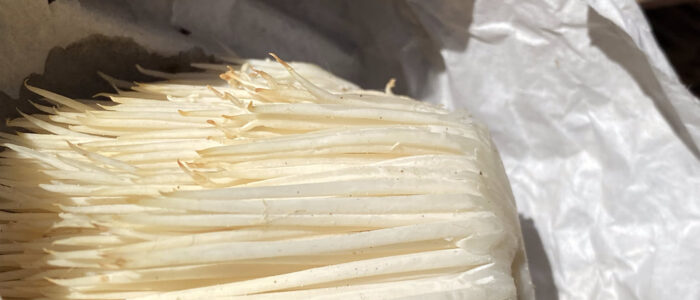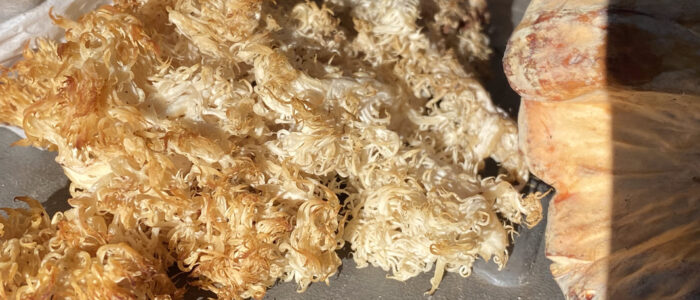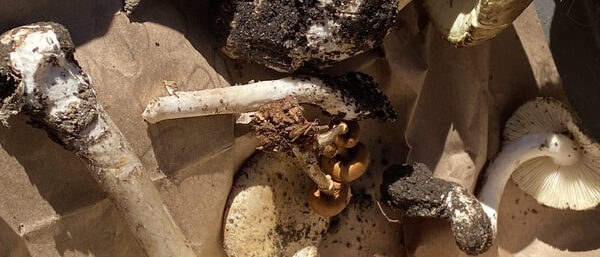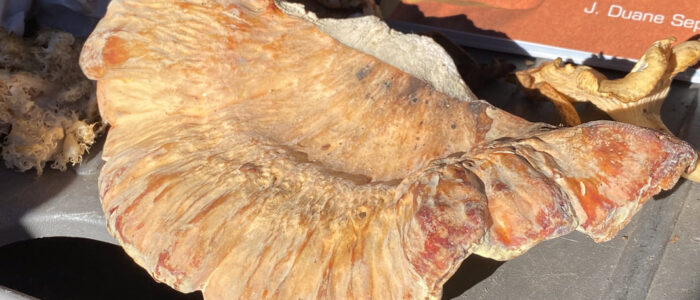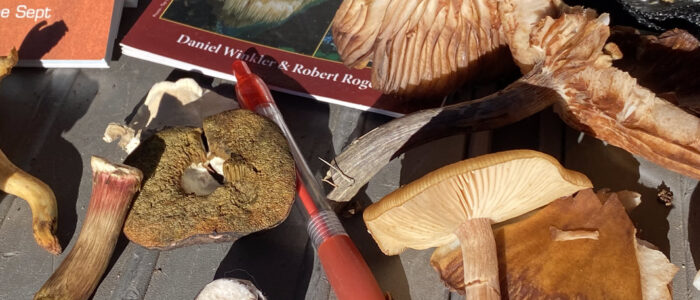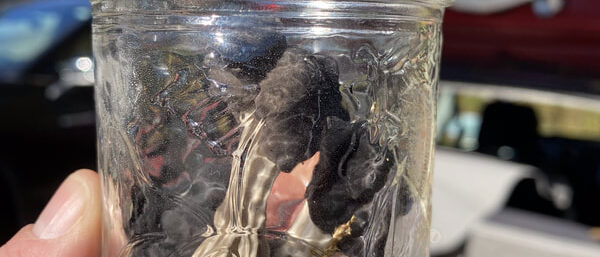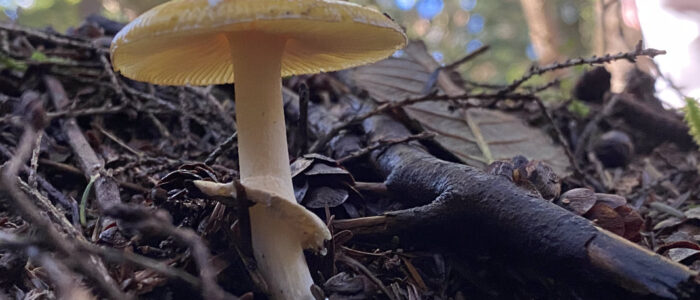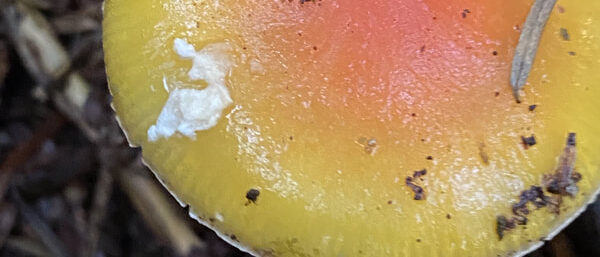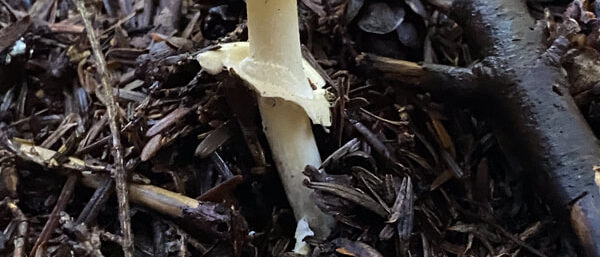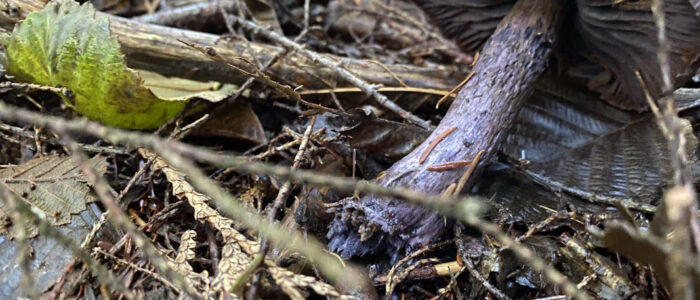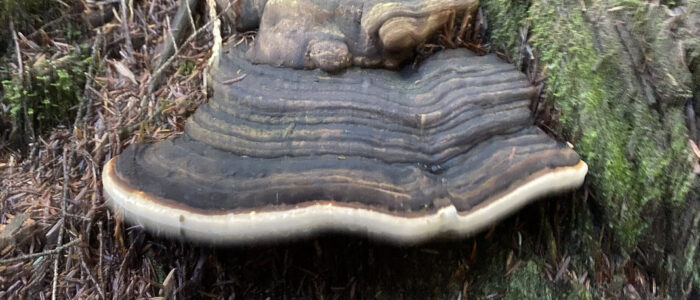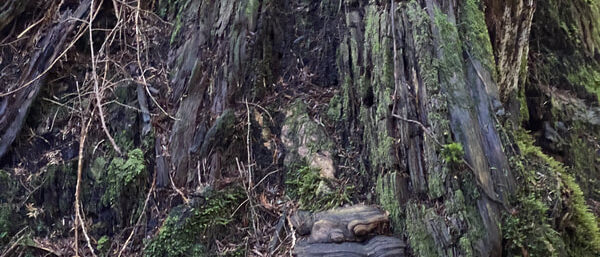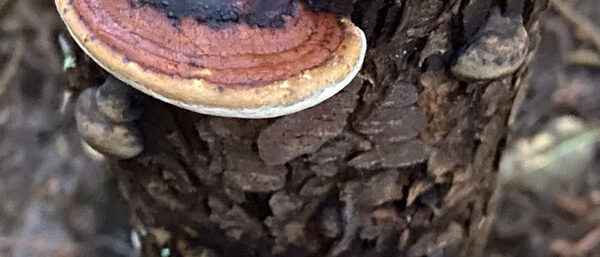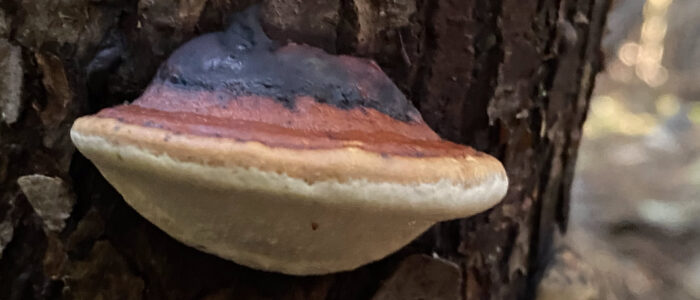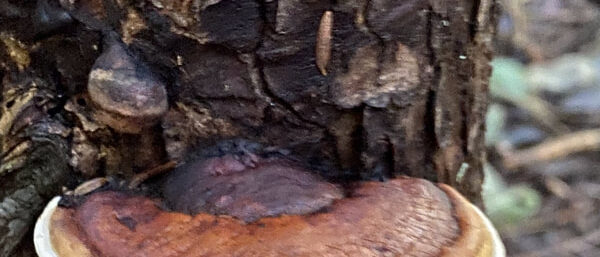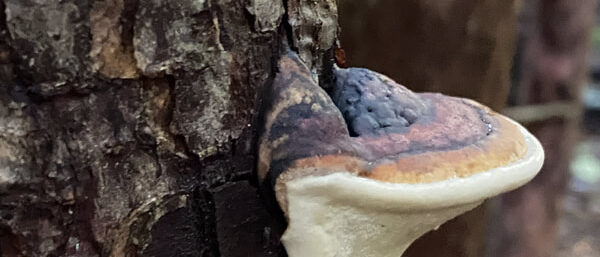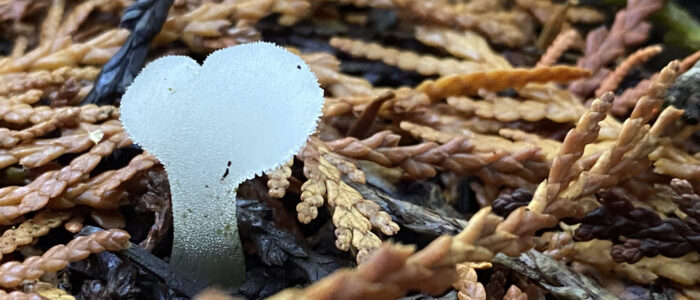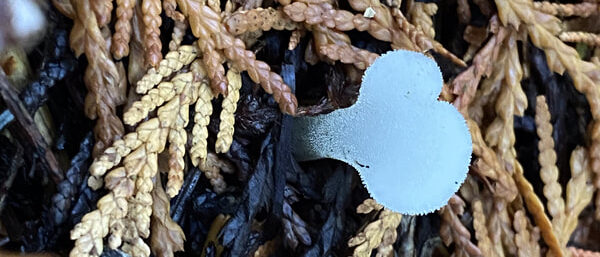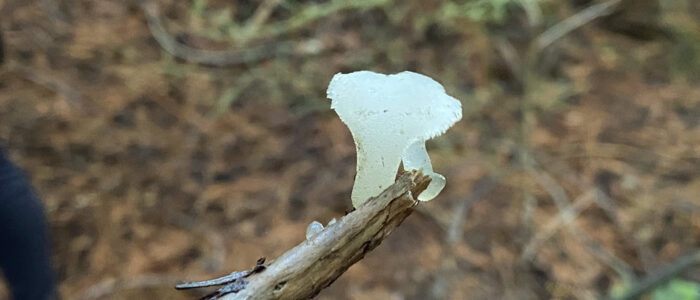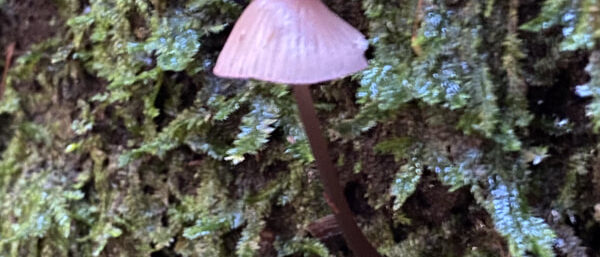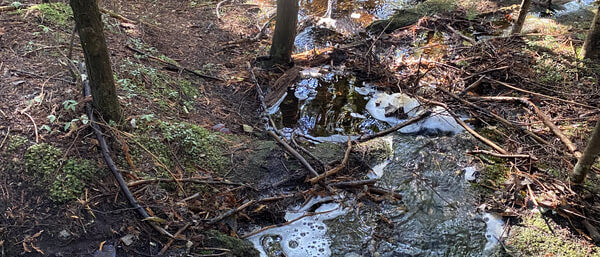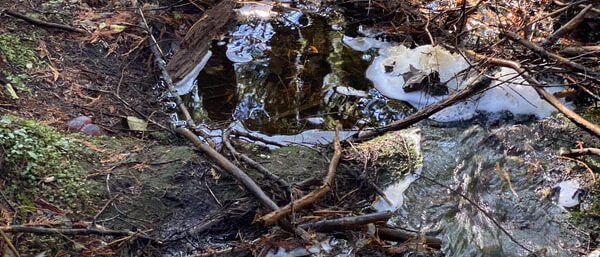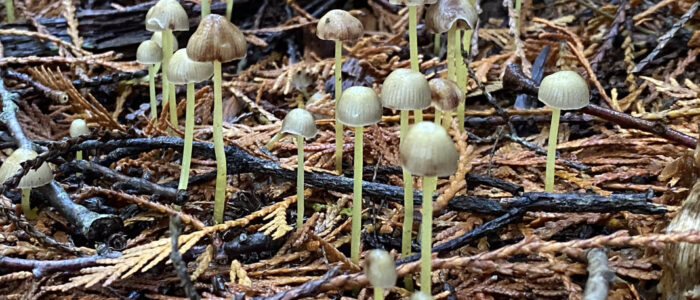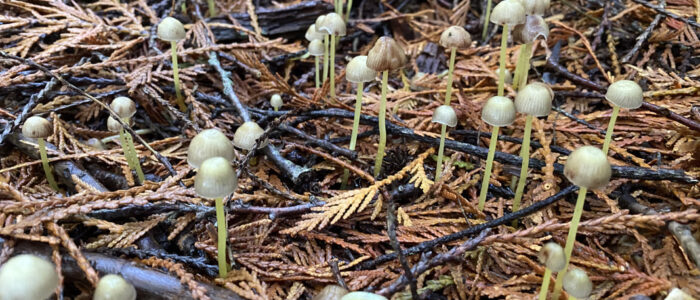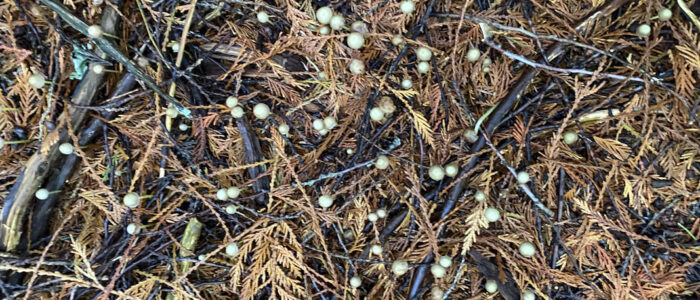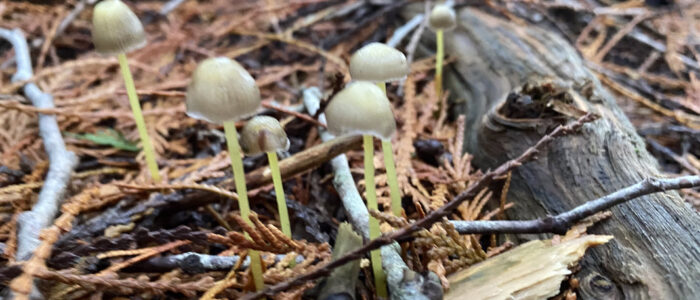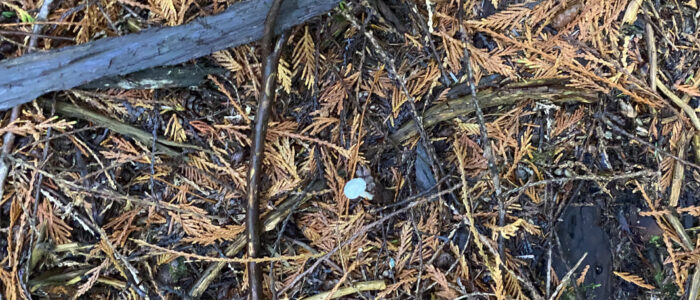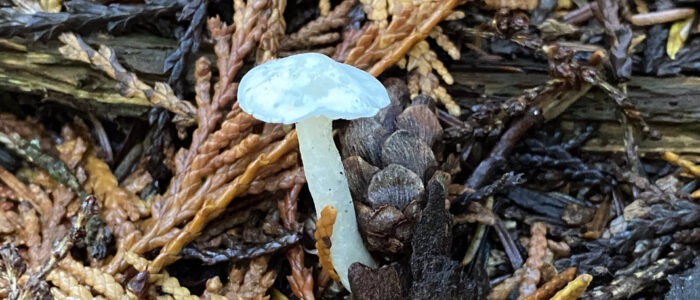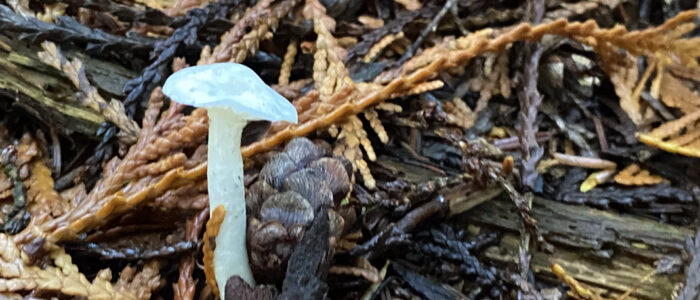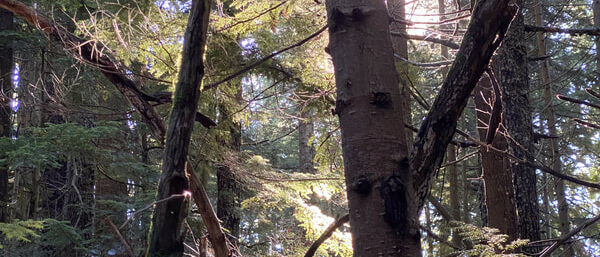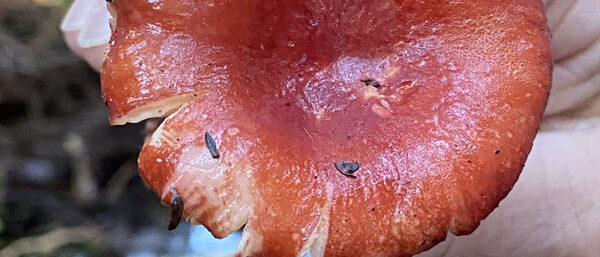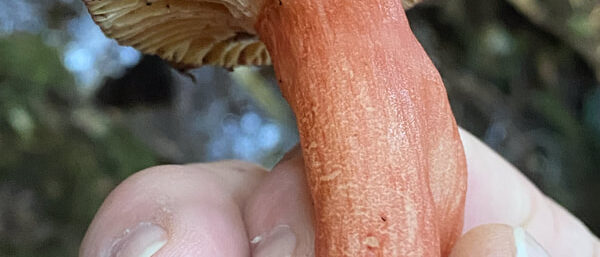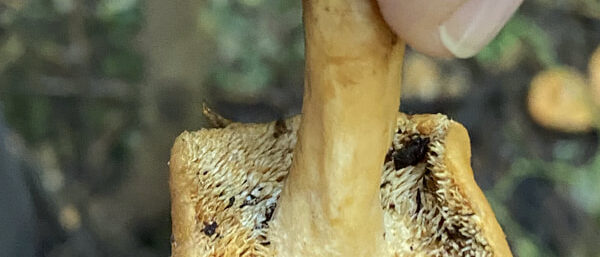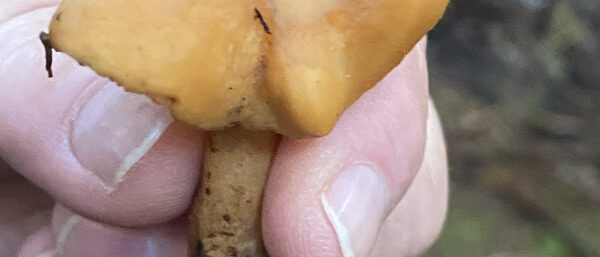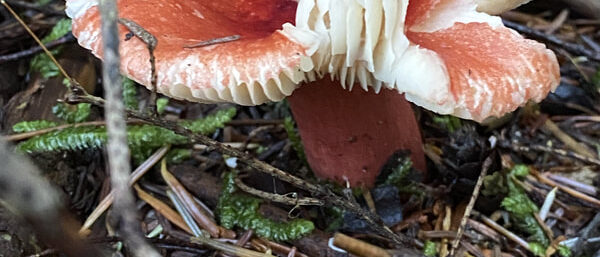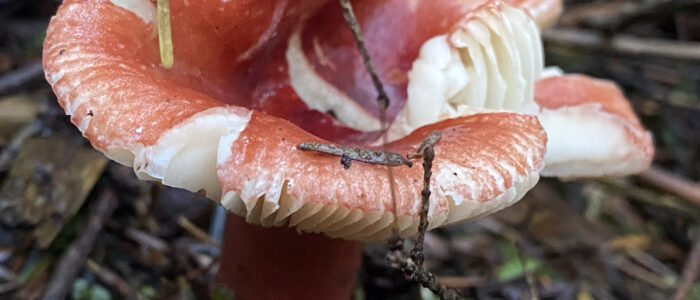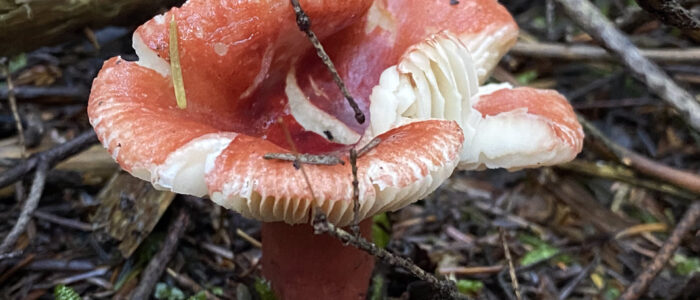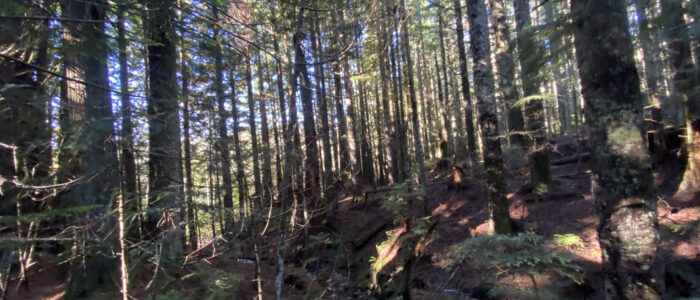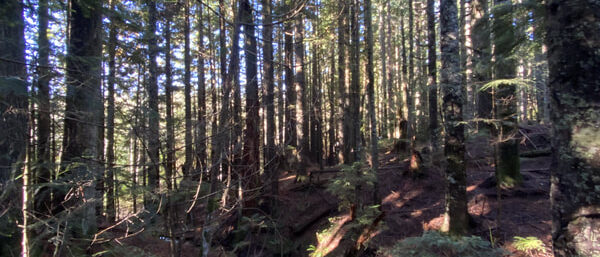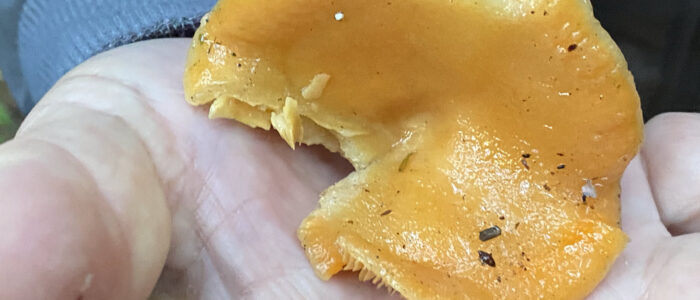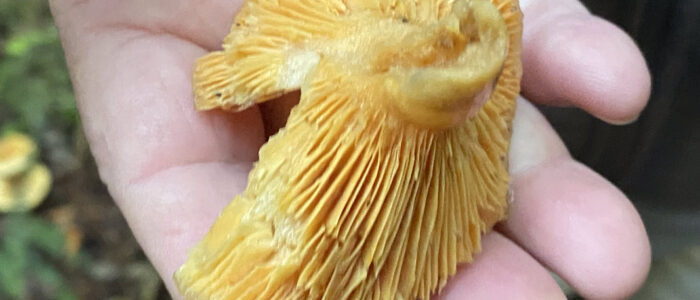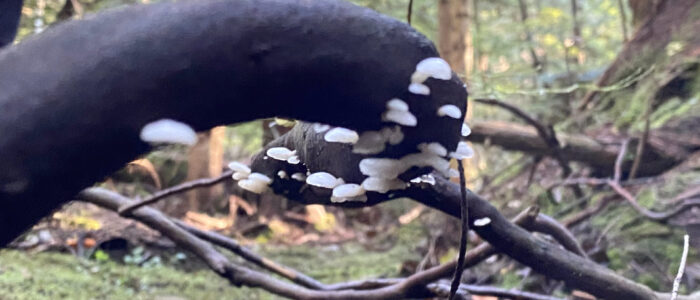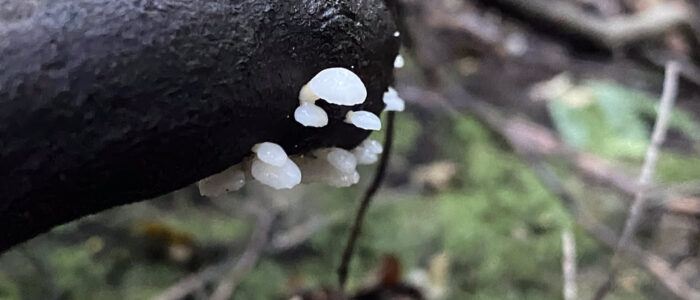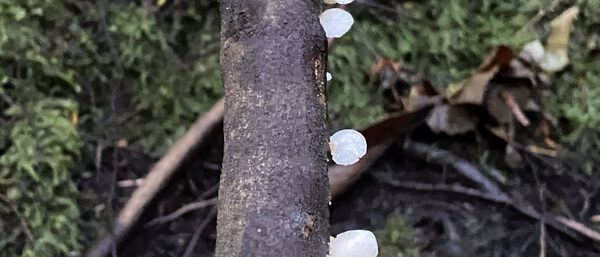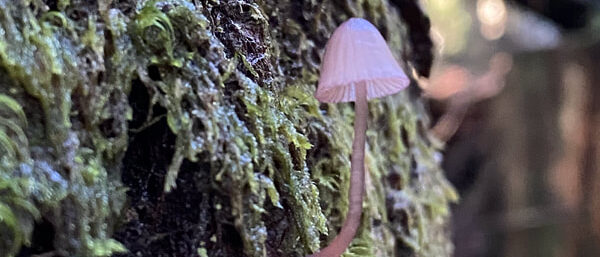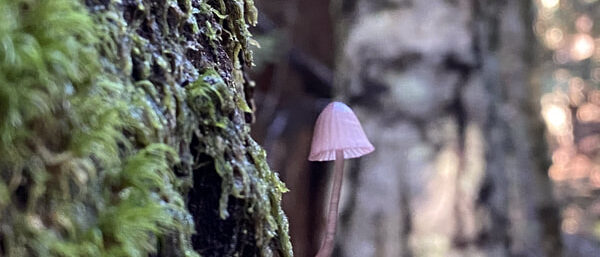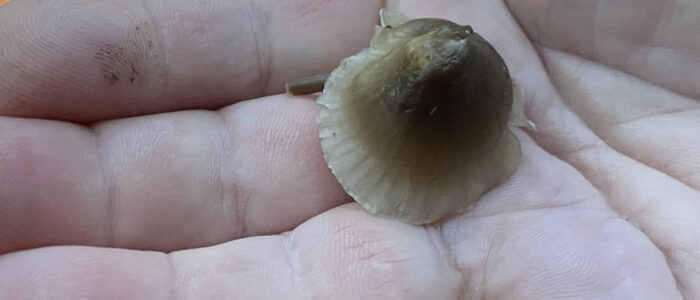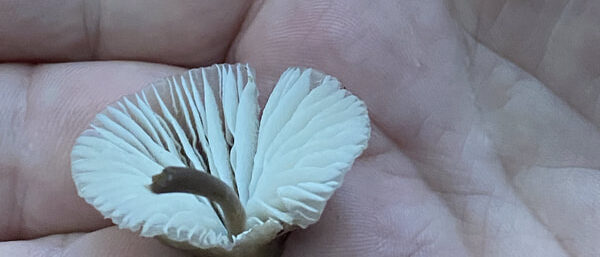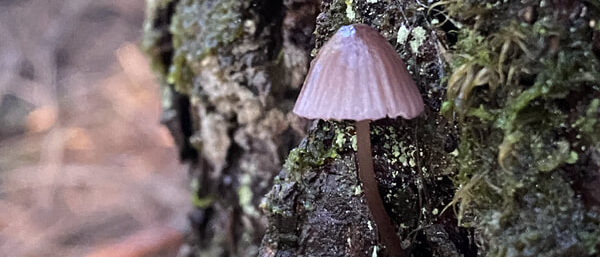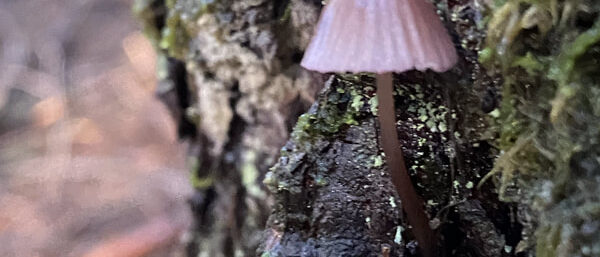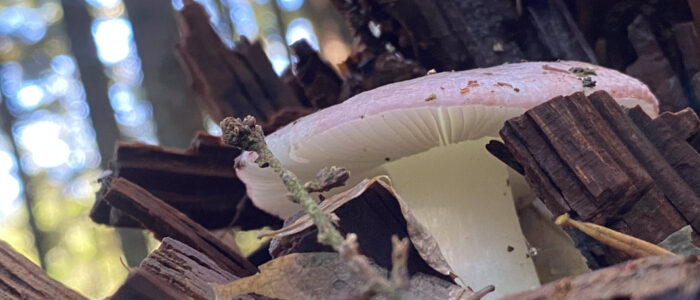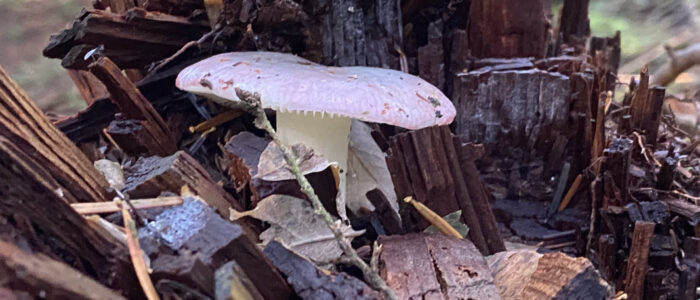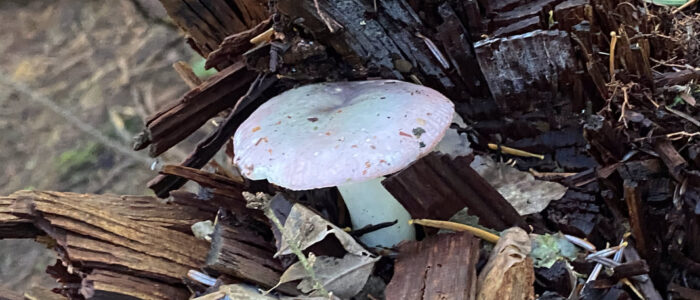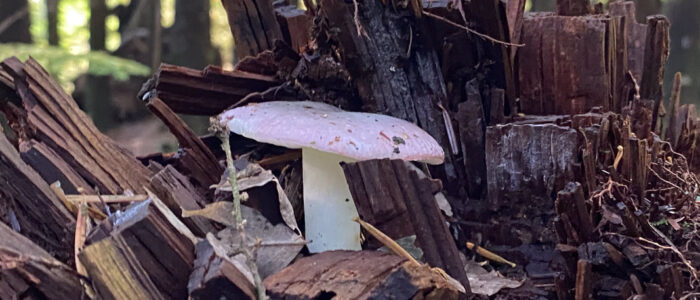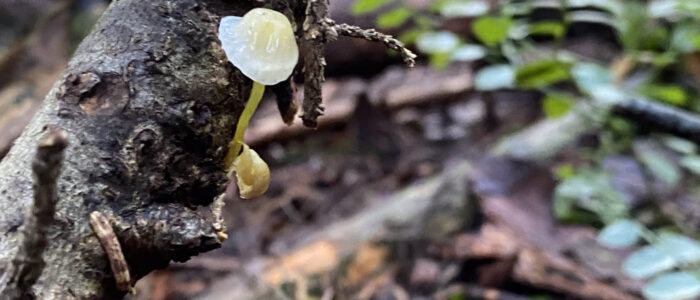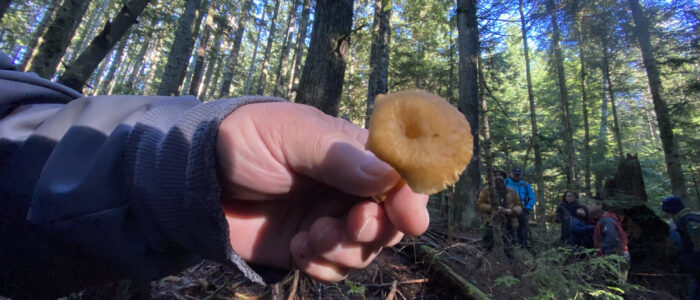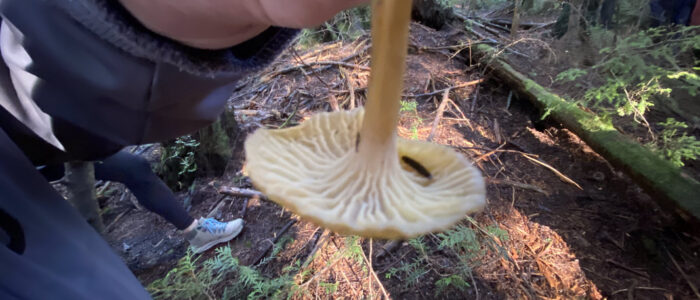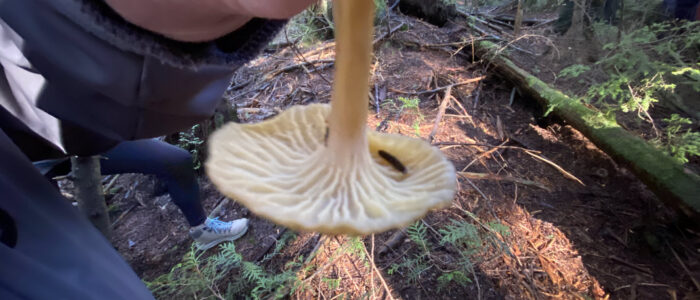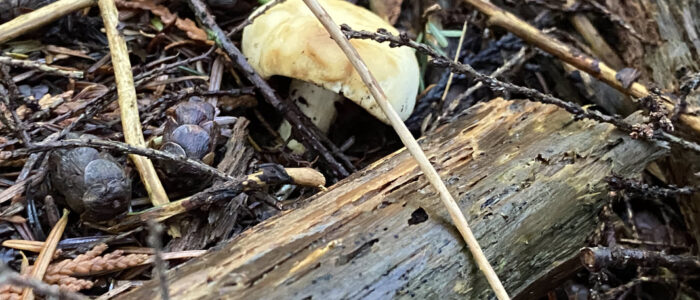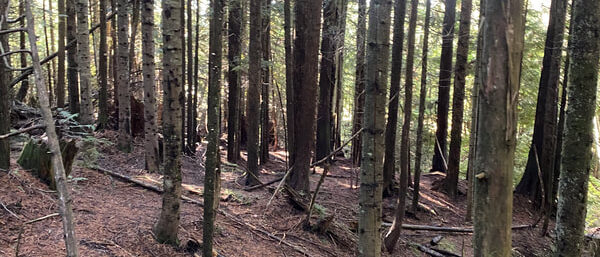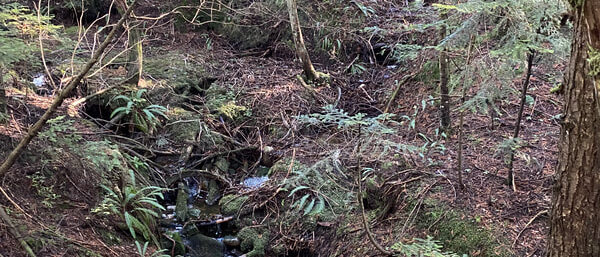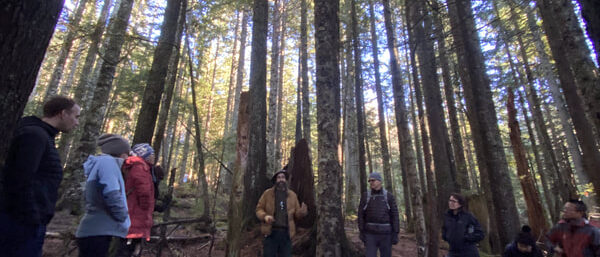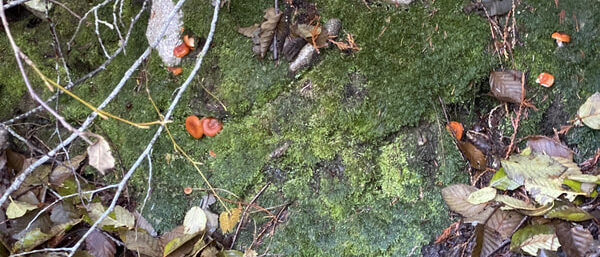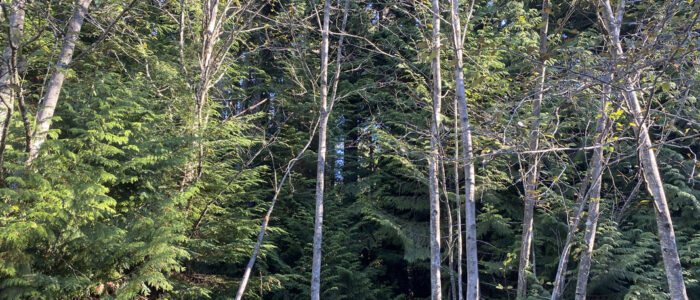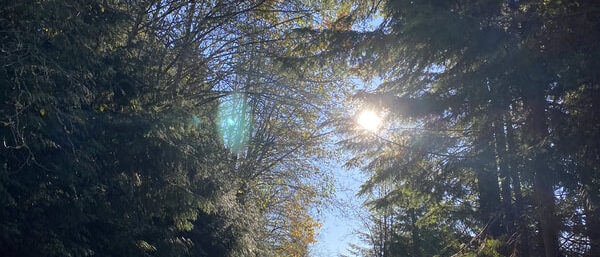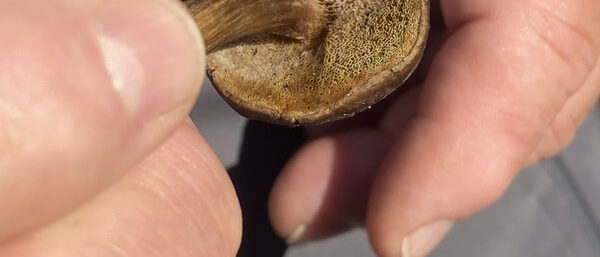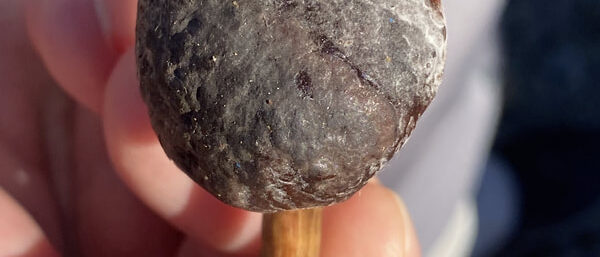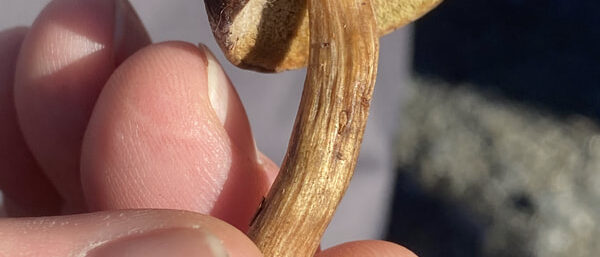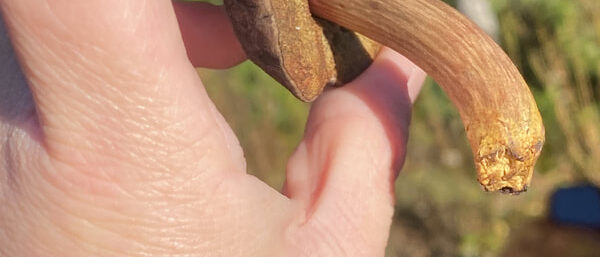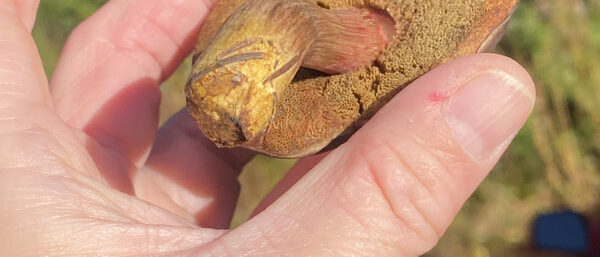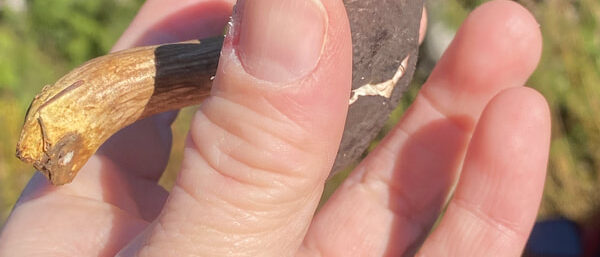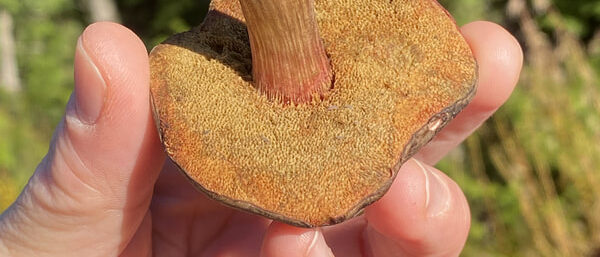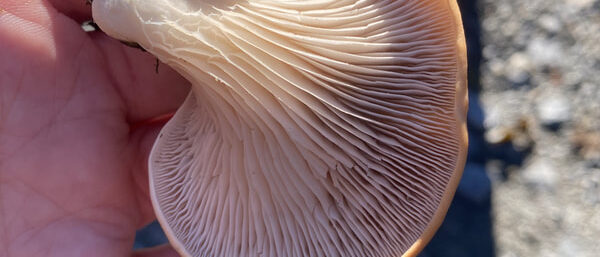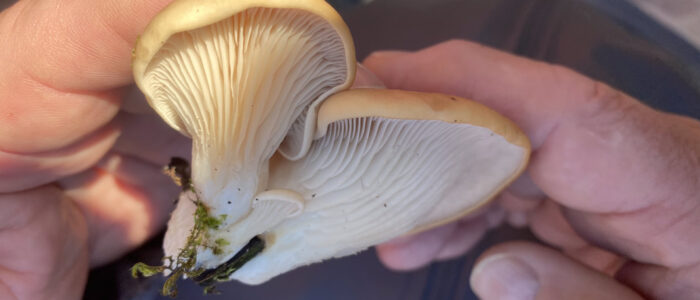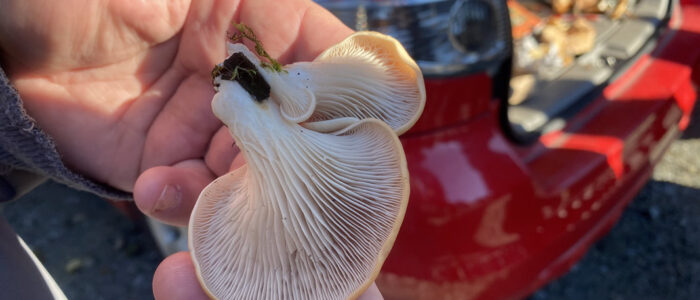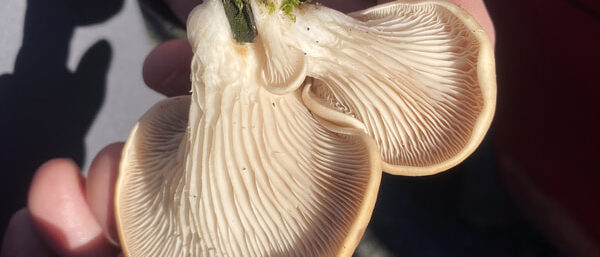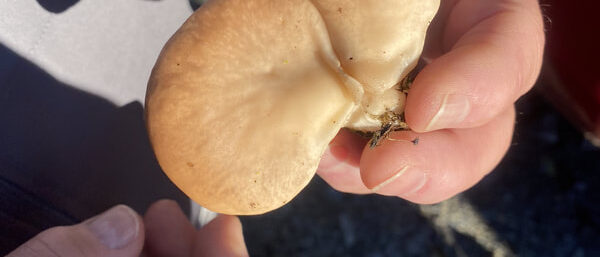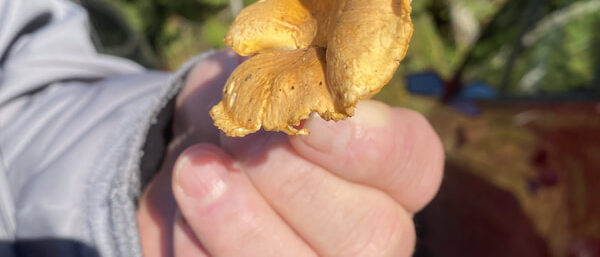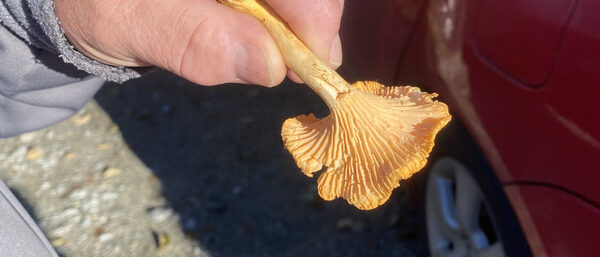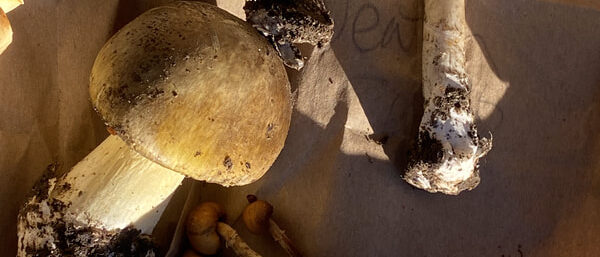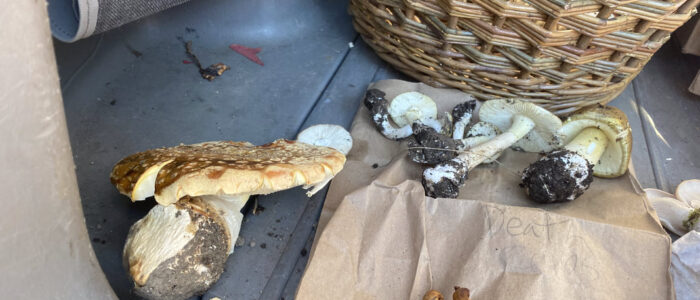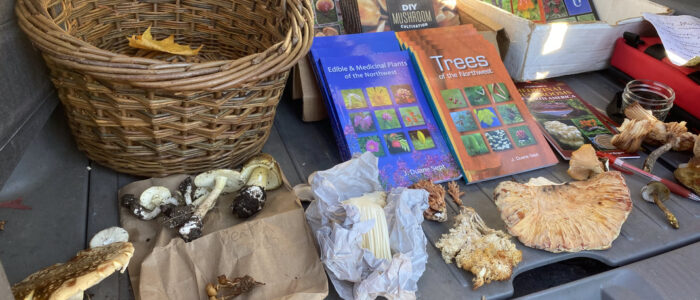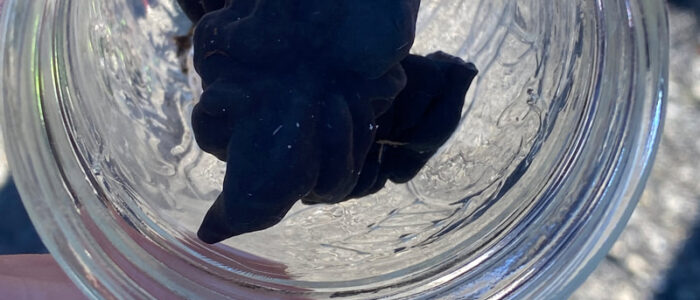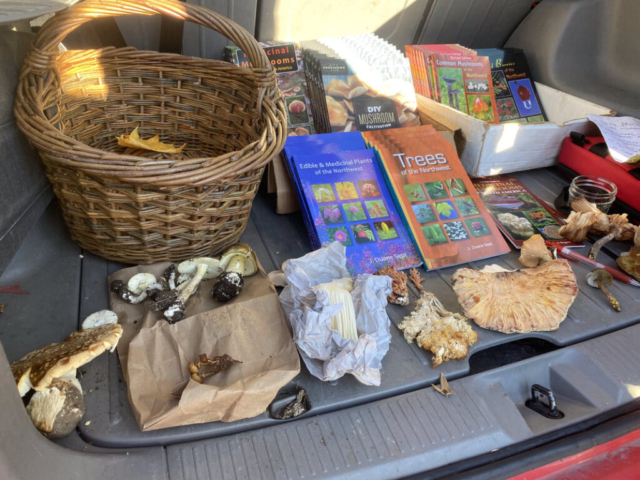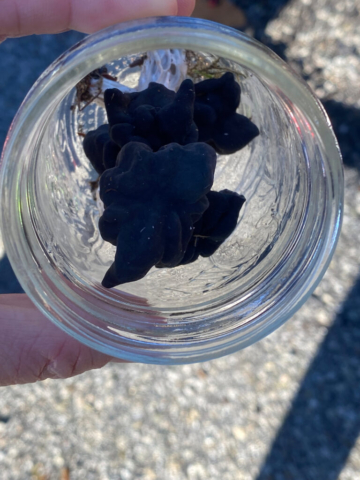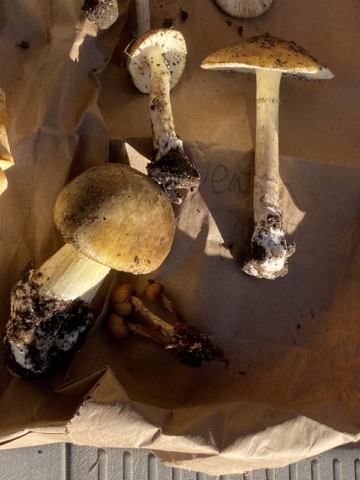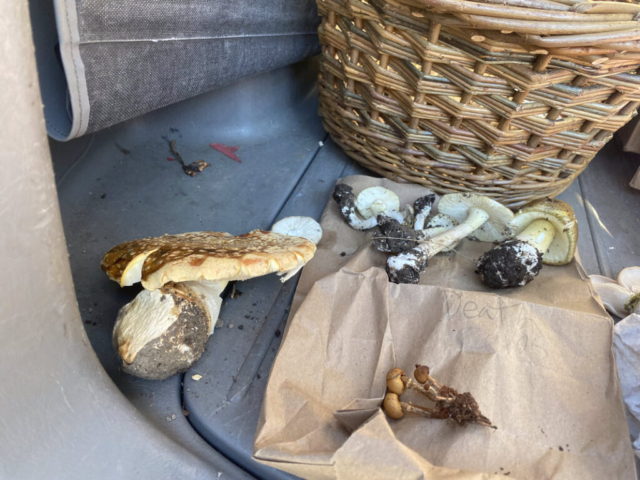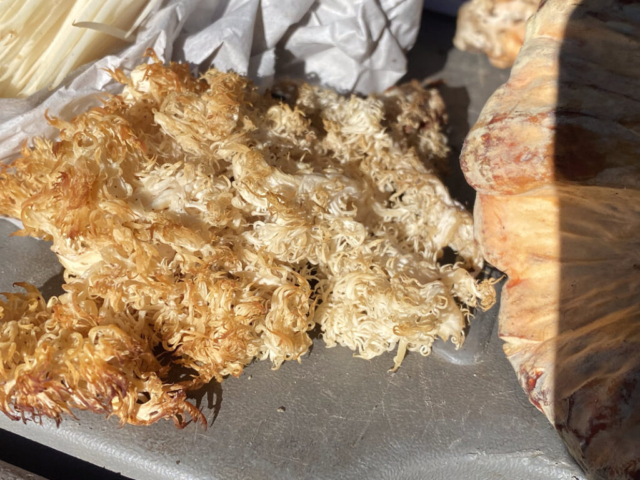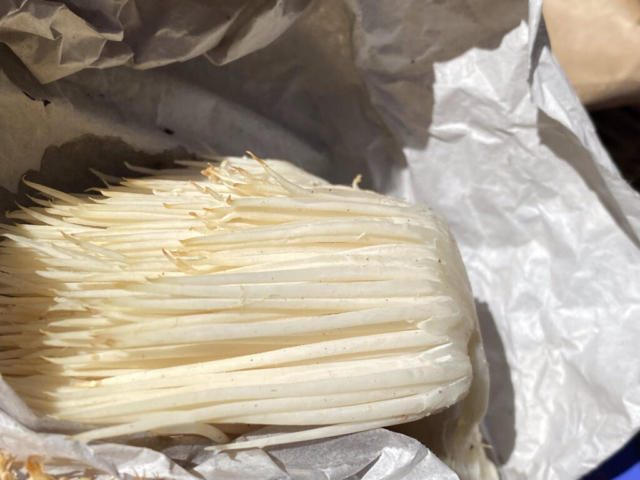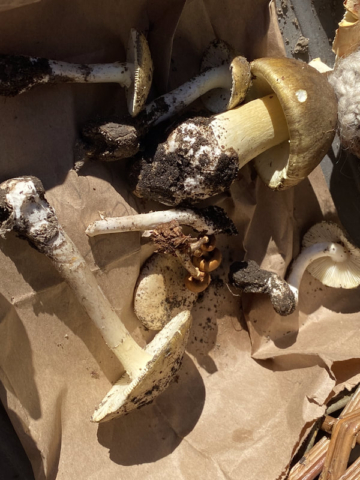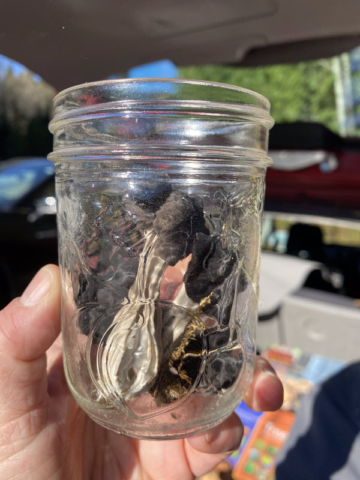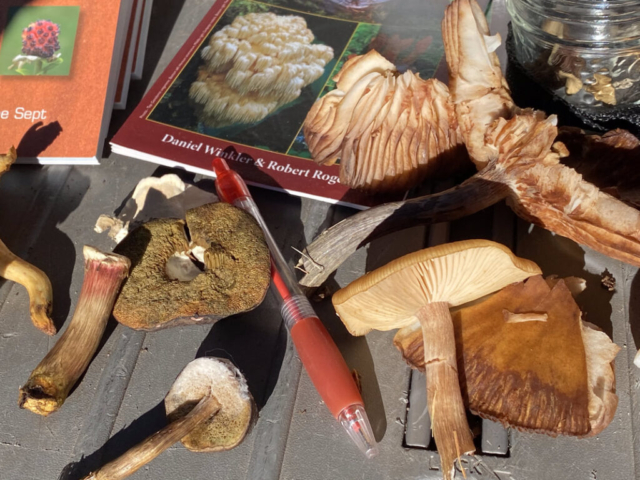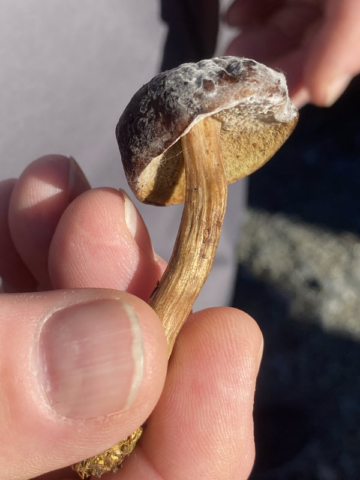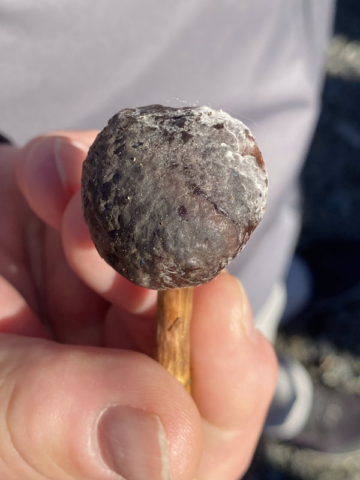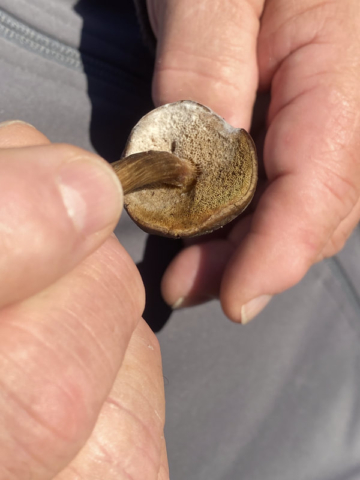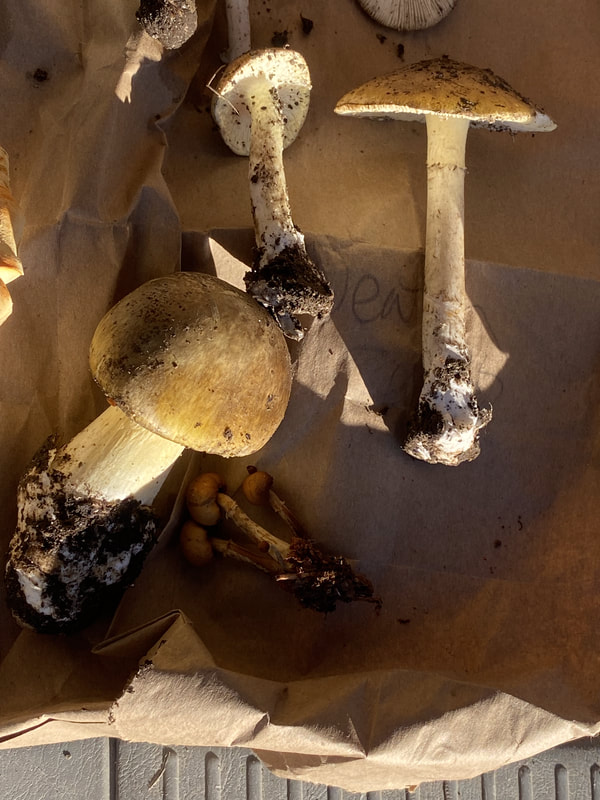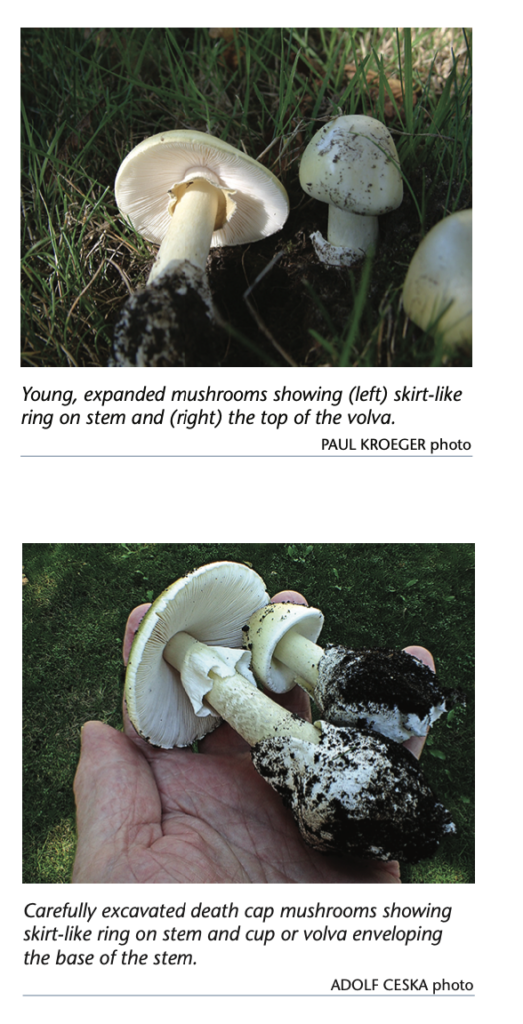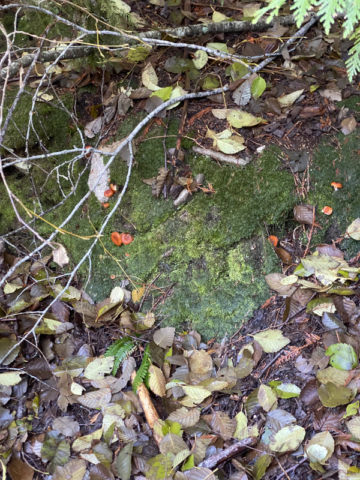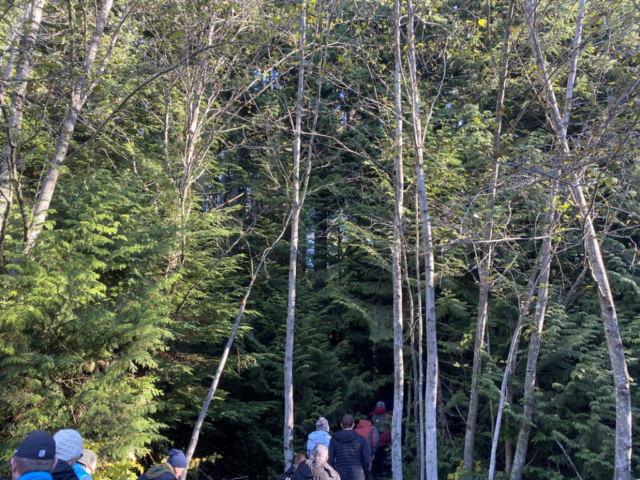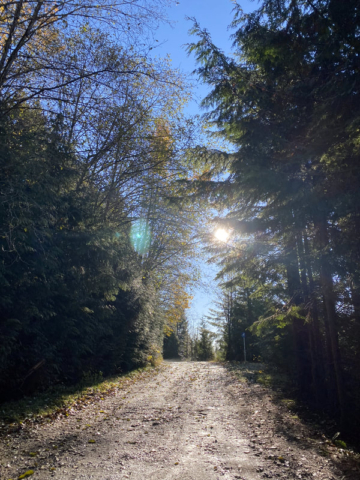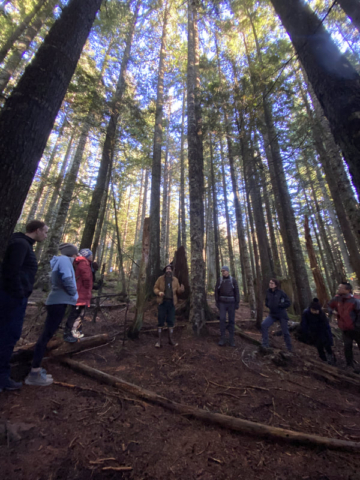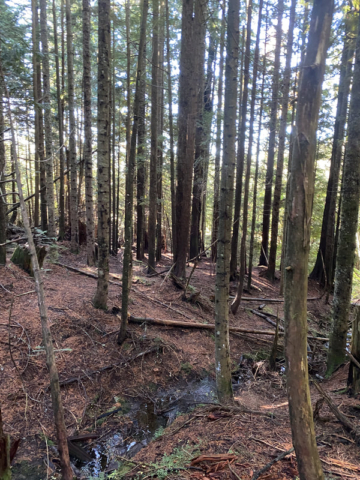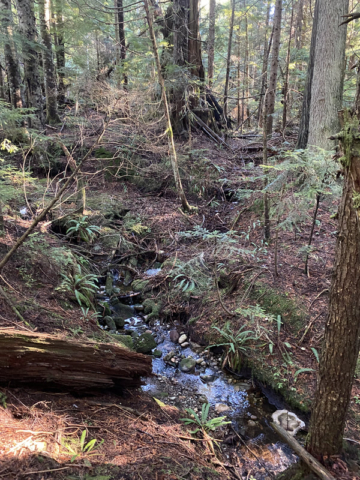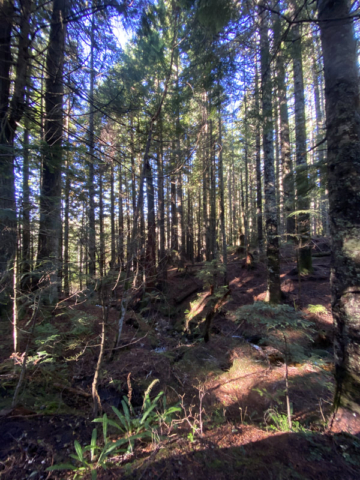- Autumn day where the torrents of rain from the last few weeks let up. A sunny yet chilly morning.
- Led by very informative myco-guide Willoughby. Two hour easy walk through an area of beautiful rainforest on Cypress Mountain (the traditional and unceded territory of the Squamish and Tsleil-Waututh First Nations).
- Whenever picking for mushroom be ABSOLUTELY sure to examine all you identify properly
List of the fungi we found or talked about on our trip
- Yellowfoot chanterelle – Craterellus tubaeformis
- Gypsy mushroom – Cortinarius caperatus
- Fly agaric – Amanita muscaria
- Wooly pine spike – Chroogomphus tomentosus
- Admirable Bolete – Aureoboletus mirabilis
- Blue-green anise mushroom – Clitocybe odora
- Slimy gray lactarius – Lactarius pseudomucidus
- Delicious milk cap – Lactarius deterrimus group
- Red belted conk – Formitopsis mounceae
- Artist Conk – Ganoderma applanatum
- Chicken of the woods – Laetiporus conifericola
- Slippery jack – Suillus spp.
- Bearded milk cap – Lactarius scrobiculatus
- False chanterelle – Hygrophoropsis aurantiaca
- Lilac Cort – Cortinarius traganus
- Blewit – Lepista nuda
- Velvet Poison pie – Hebeloma spp.
- Sparrasis crispa – cauliflower mushroom
- Hedgehog – Hydnum repandum
- Pacific Golden Chanterelle – Cantharellus formosus
- Matsutake/Pine mushroom – Tricholoma murrillanum
- Angel wings – Pleurocybella porrigens
- Porcini – Boletus edulis
- Dog poop fungus/Bolete Eater:) – Hypomyces
- Brittlegills – Russula spp. including R. cremoricolor, R. aerugine
To start the tour, Willoughby, our myco-guide brought a number of mushrooms that he didn’t anticipate us to find during our walk, but brought to share with us as part of our local fungi education and learning
Helvella vespertina – Western elfin saddle https://www.zoology.ubc.ca/~biodiv/mushroom/H_vespertina.html
Passed around in a jar, held up to our ear, we could hear the spores.
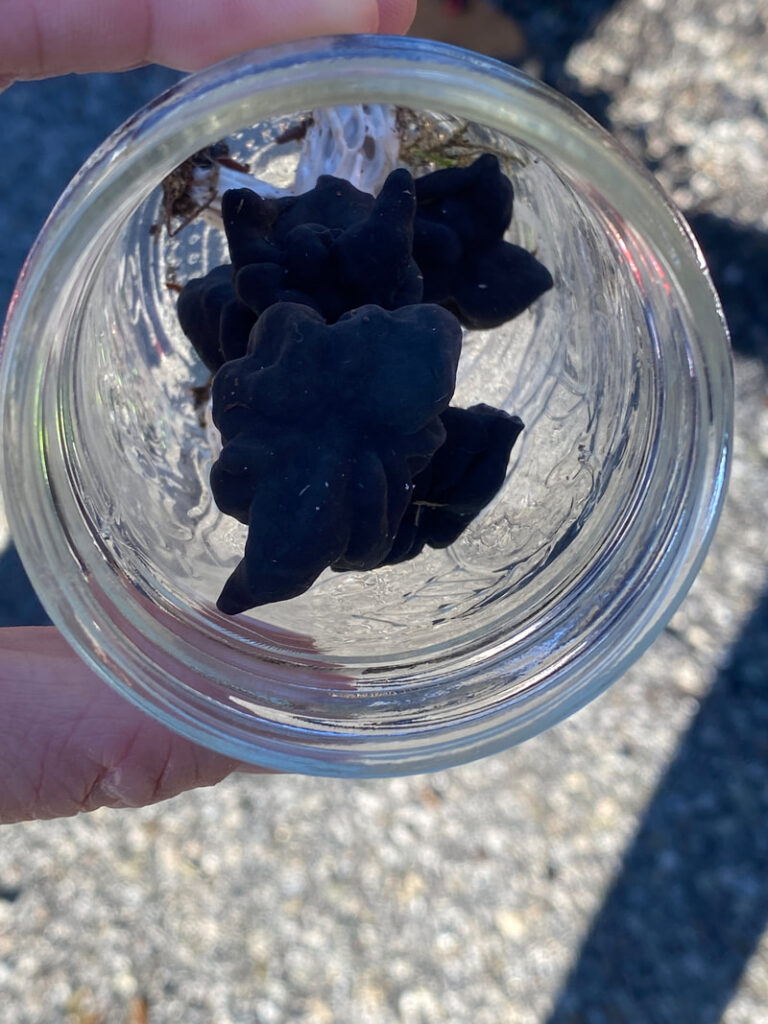

Cantharellus – Chanterelle
Trumpet cap not hollow stem
Firm fibrous
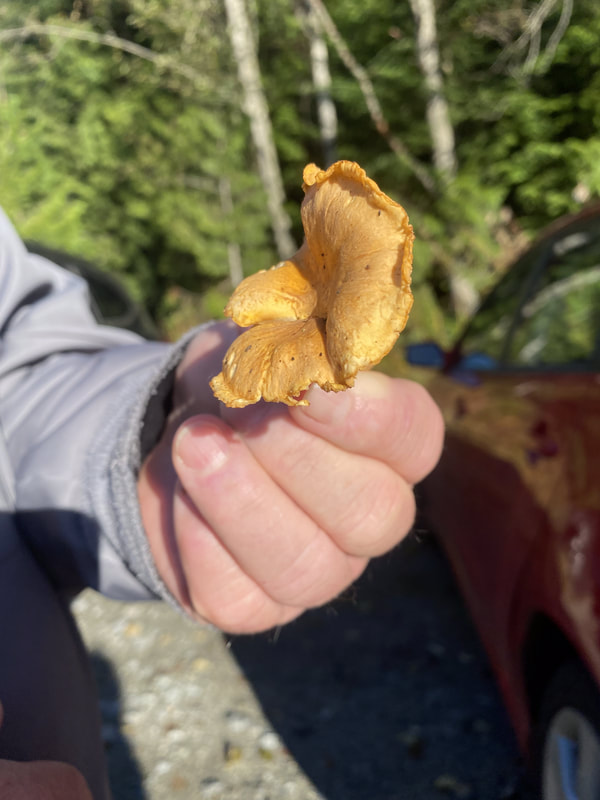
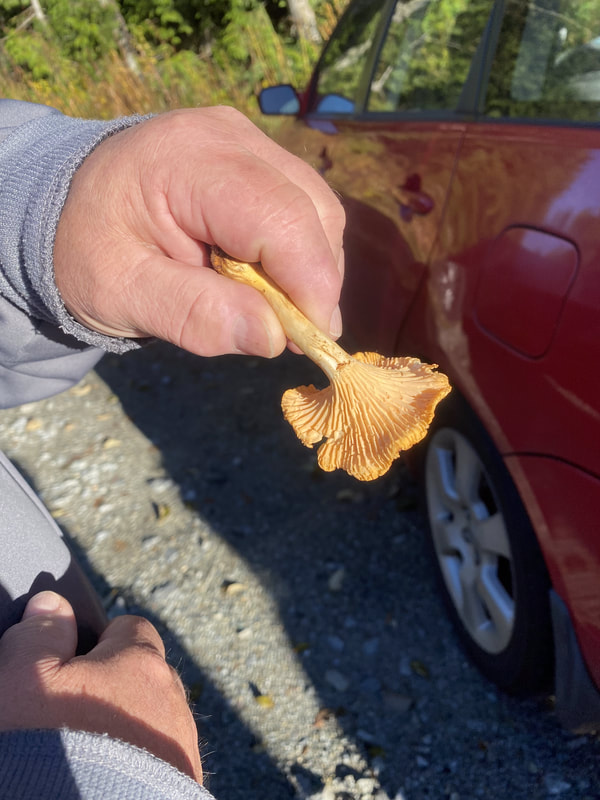
Pleurotus ostreatus – Oyster Mushroom or Hiratake
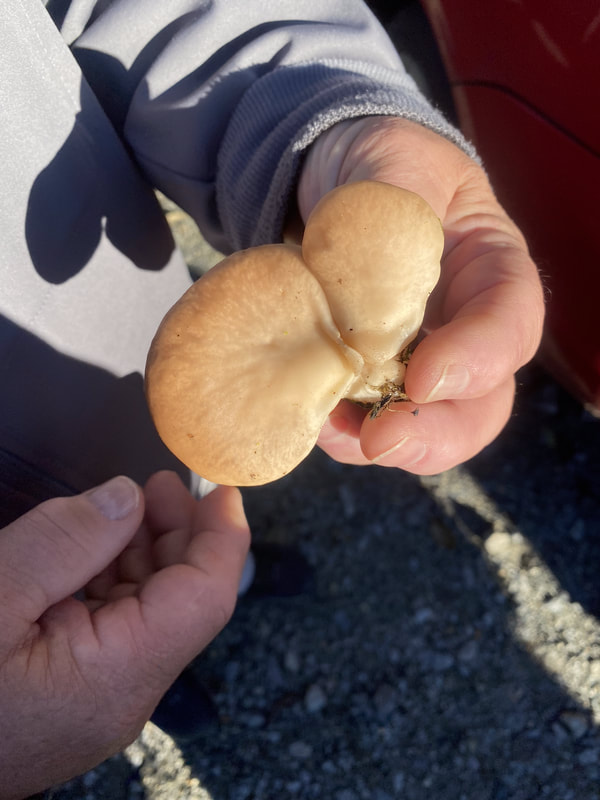
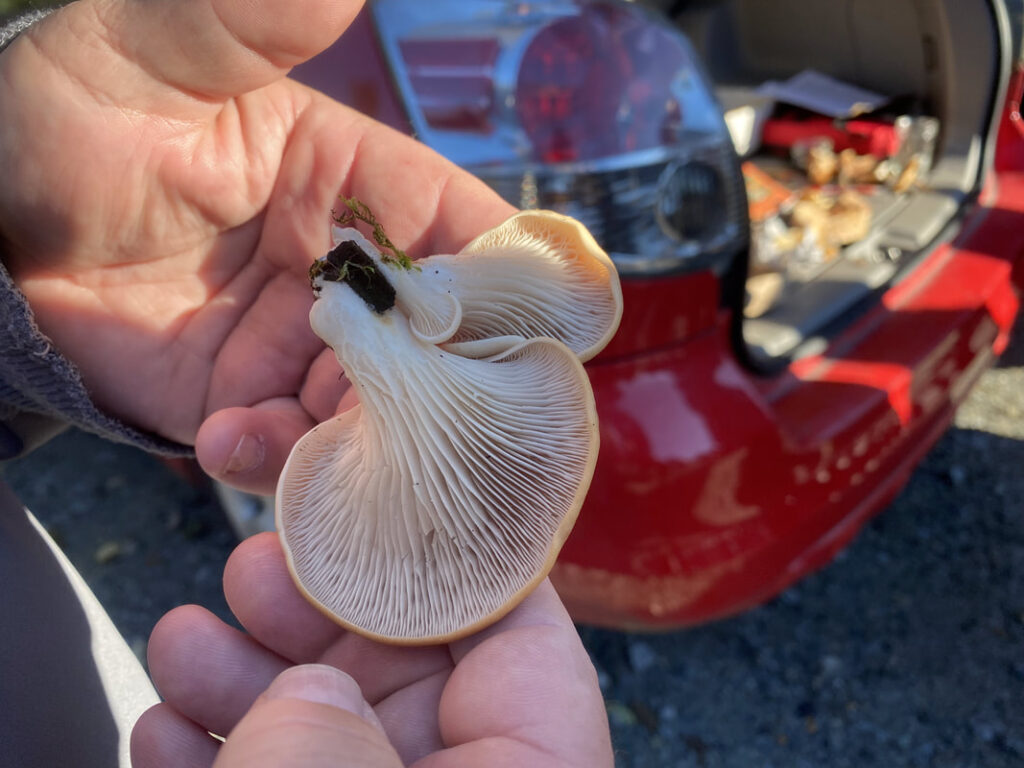
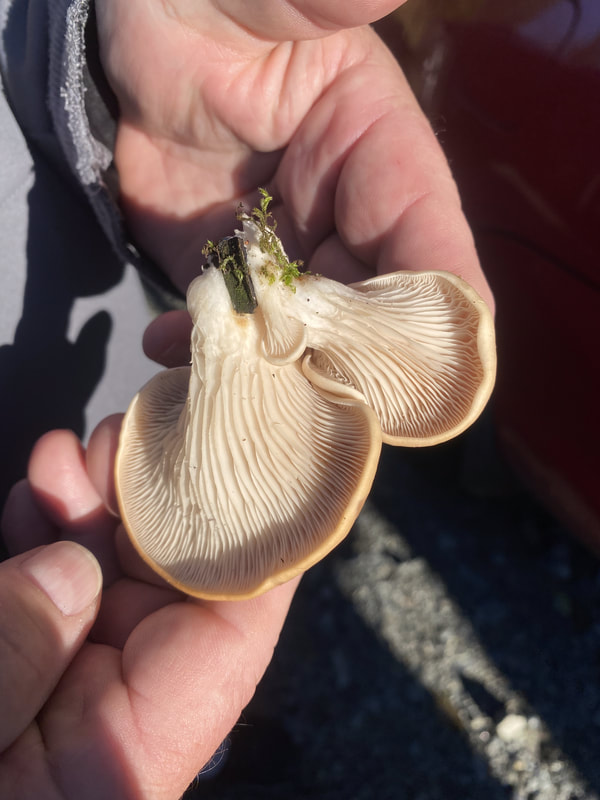
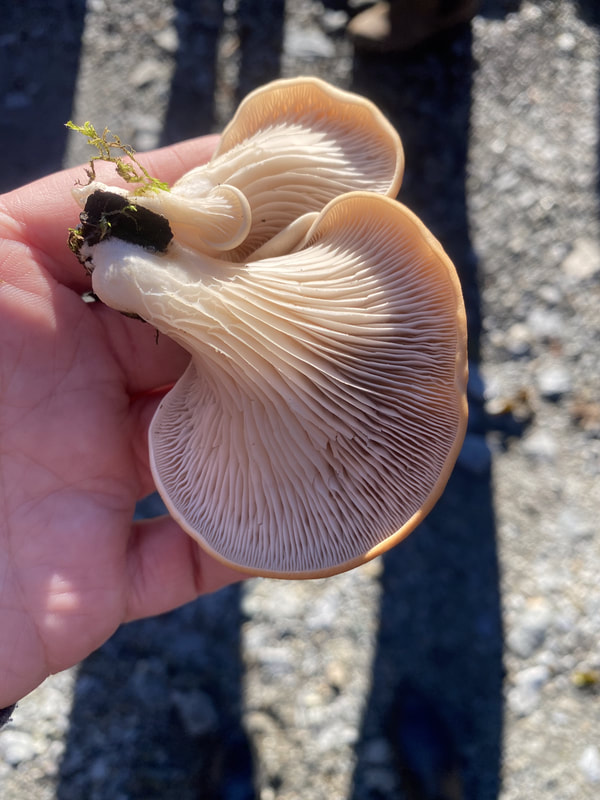
Xerocomellus zelleri – Zeller’s Bolete
Mushroom cap and stalk fleshy texture and spongey tubes under cap
Surface pores
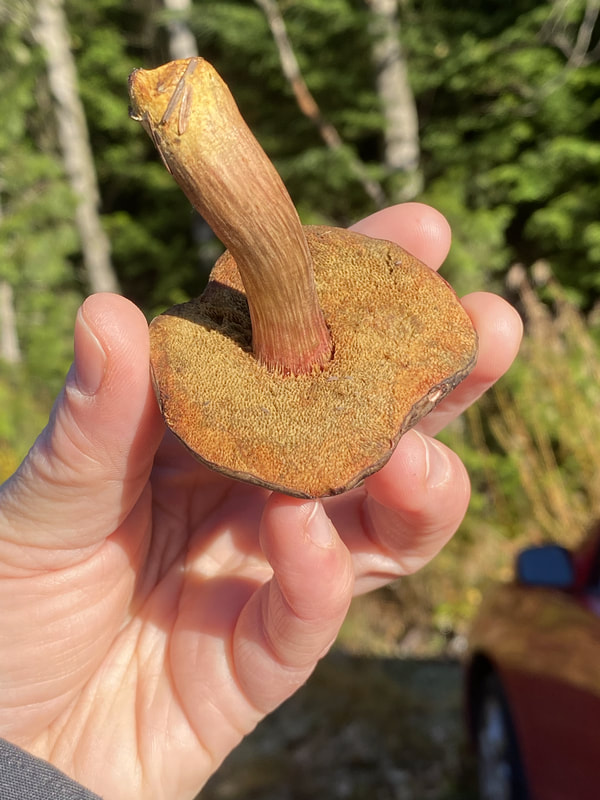
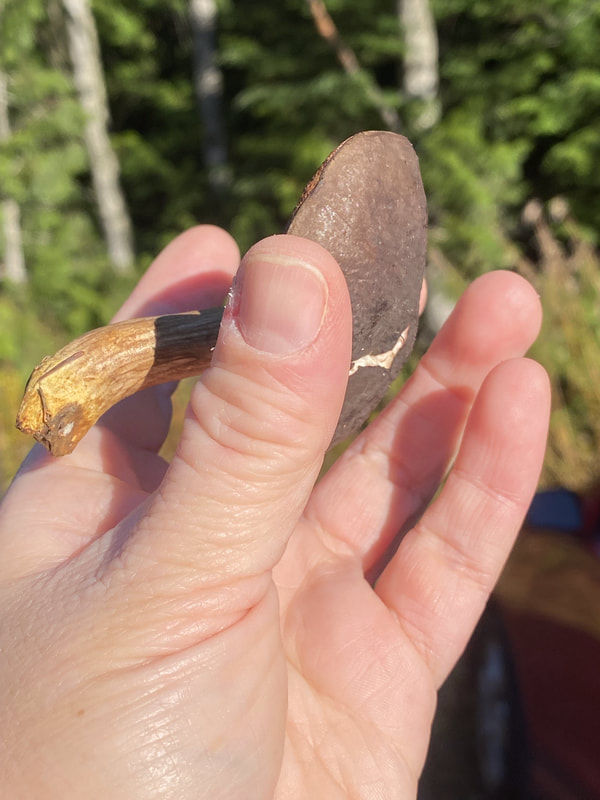
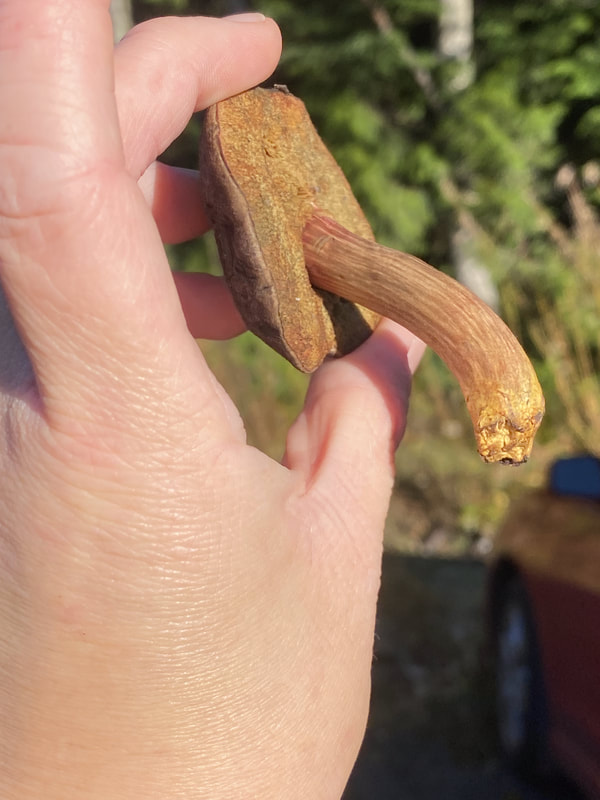
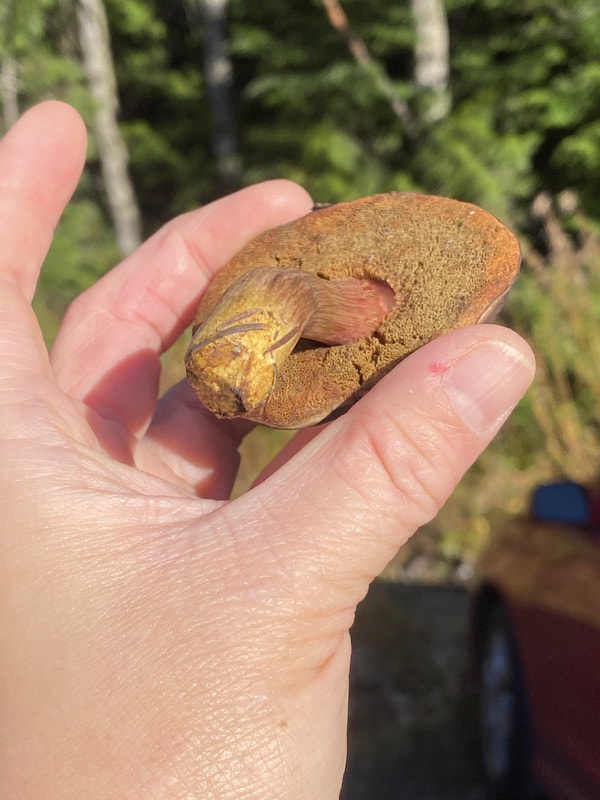
Parasitic mold when spores mature
Don’t eat!!!
Fungi
“fungus, plural fungi, any of about 144,000 known species of organisms of the kingdom Fungi. Fungi are among the most widely distributed organisms on Earth and are of great environmental and medical importance. Many fungi are free-living in soil or water; others form parasitic or symbiotic relationships with plants or animals.”
Mycelium
“Mycelium is the vegetativepart of a fungus or fungus-like bacterial colony, consisting of a mass of branching, thread-like hyphae.”
from Britannica.com
Mushroom
“mushroom, the conspicuousumbrella-shaped fruiting body (sporophore) of certain fungi”
from Britannica.com
Amanita phalloides – Death Cap Mushrooms
From the BC CDC (British Columbia Centre for Disease Control):
Where did the death cap mushroom come from? The death cap mushroom is a European native likely introduced to North America accidentally on the roots of imported horticultural trees. Since its initial introduction, it may have been propagated inadvertently in plant nurseries on tree roots and transferred to boulevards and other locations where these host trees were planted.
Is this mushroom a problem in Europe? Yes. This mushroom is the cause of the most frequent and most serious poisonings wherever it is found. It is better known in Europe than it is here and is thus avoided by experienced mushroom foragers there; newcomers unfamiliar with the local mushrooms are at greater risk.
Death Cap Mushrooms (Amanita phalloides) BC Prohibited Species Alert
Originally from Europe
Working way up coast and has been in BC ~20 years
Deadly poisonous
Live in mutual symbiosis with trees that we find in cities (e.g.: beech, oaks and birches)
Start out in egg/pear-shape and can be mistaken for puffball mushrooms https://foragerchef.com/puffball-mushrooms/
Stalk elongates and leaves a cup at the base (underground)
Sensitive to gravity and will bend the stalk up towards light source so can have funky stems
Similar lookalike to amonita princeps
TIP: READ SPORE COLOR ESPECIALLY WITH GILLED MUSHROOMS!
Hericium Erinaceus – Lion’s Mane or Monkey Head
Grows on hardwood
Hericium abietis – Bear’s Head or Western Coral Hedgehog
Grows on conifers
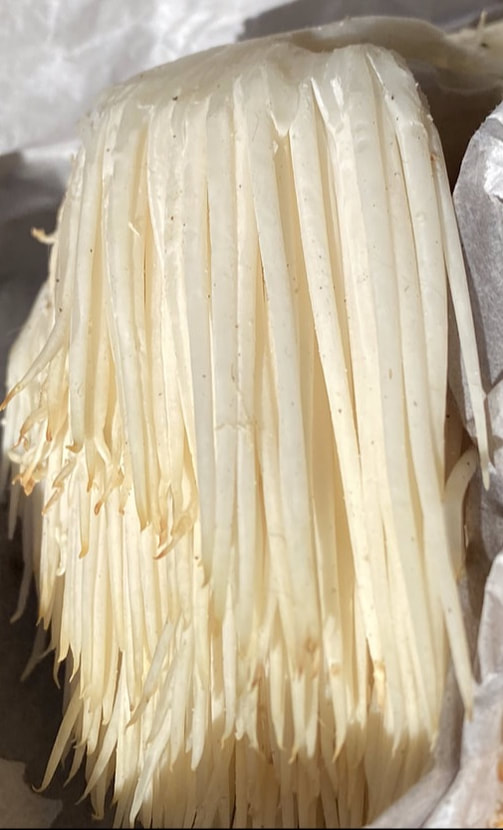
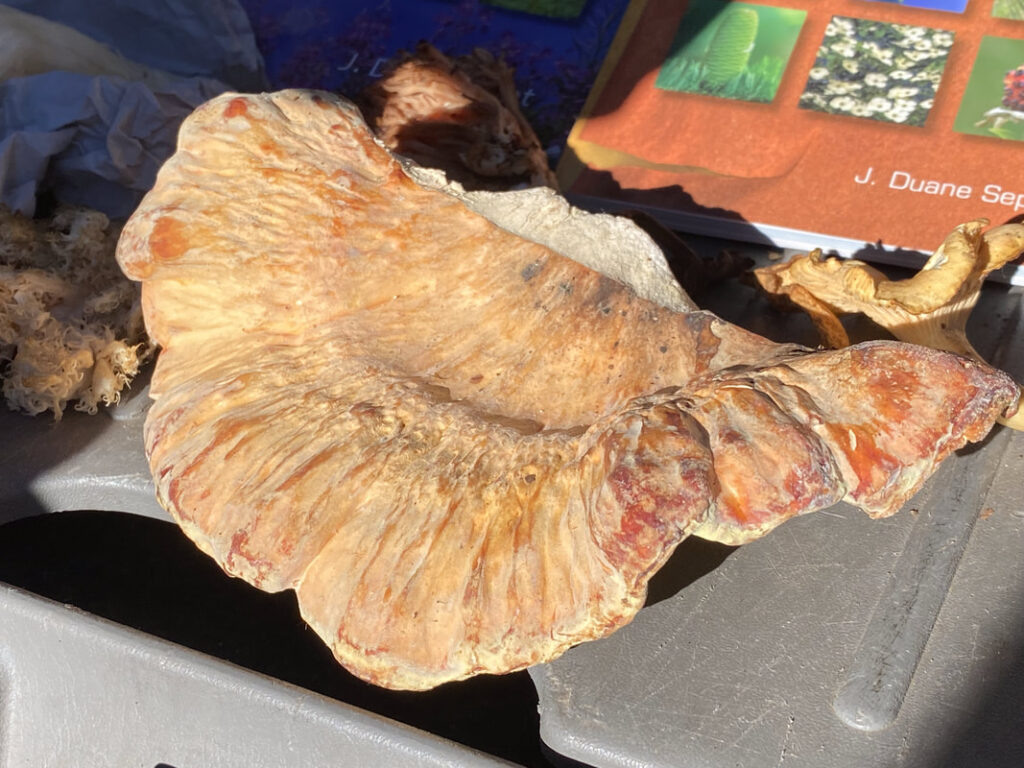
Laetiporus sulphureus – Chicken of the Woods
Grows on dead or live trees logs stumps
Edible for most people
Lemony, meaty taste (hence the name)
Tender and juicy when young
When overripe and dry – not edible
Poisonous raw, edible when cooked
And into the forest we go…. (This was an identification course and we did not harvest any mushrooms).
- Useful guide I found after the workshop that shares local BC regulations
- Recommendation from our myco-guide for most accurate data map that provides information on land use / classification BC Maps
Safety! Pay attention! Bring proper supplies, including flashlight.
Respect our homeland and all the lands with which we interact.
Galerina marginata – Funeral Bell or Deadly Skullcap
Often in same habitat as Death Cap Mushrooms and is deadly poisonous:
Rusty brown spore print
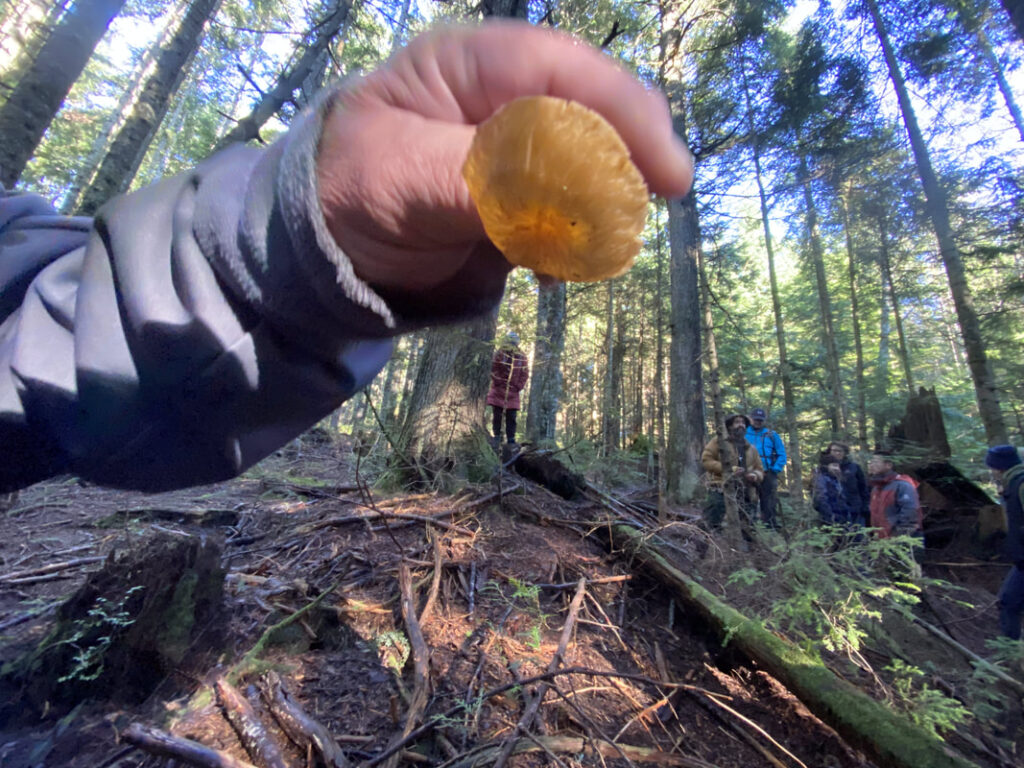
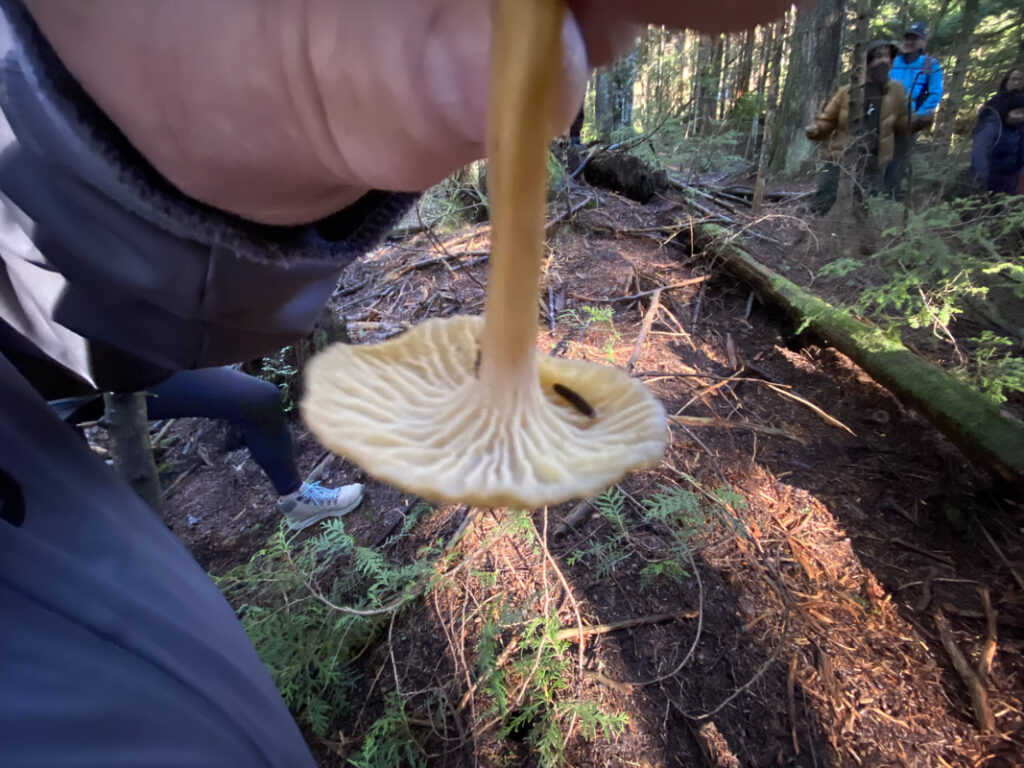
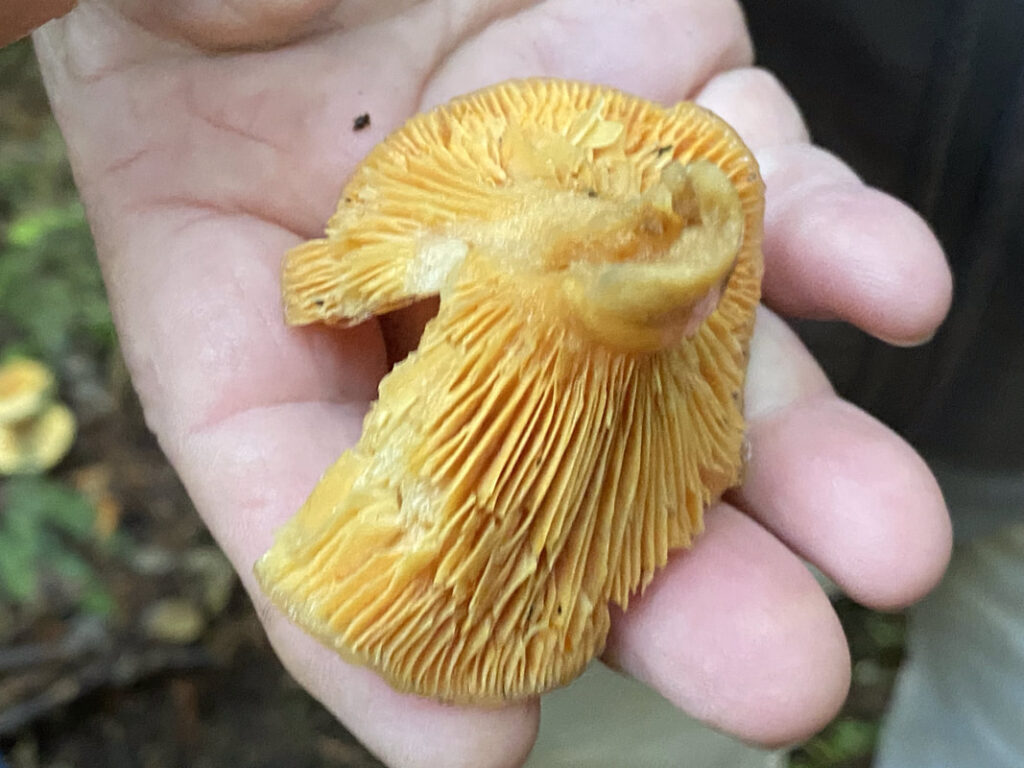
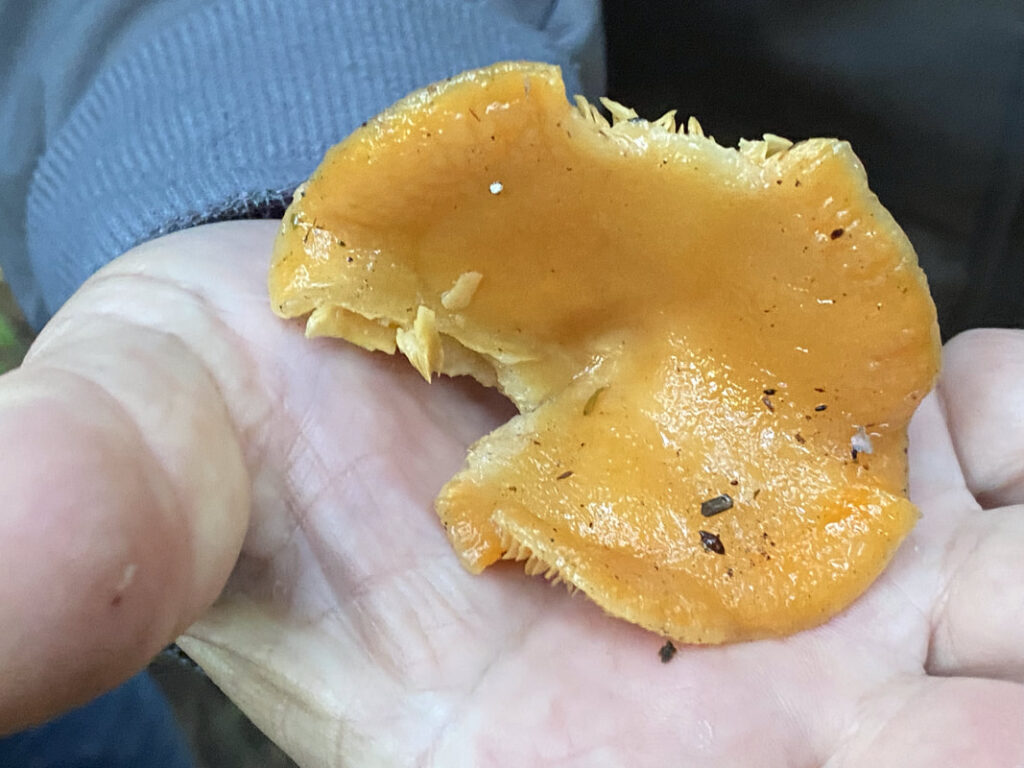
Craterellus tubaeformis – Yellowfoot, Winter Mushroom, Funnel Chanterelle
is an edible fungus, also yellowfoot, winter mushroom, or funnel chanterelle.
Wavy wrinkly colds on underside of cap
Thin flesh
Belly button in middle of cap
Edible delicious
Grows with conifer trees – Hemlocks spruces firs
Small but abundant
Lactarius deliciosus – Saffron Milk Cap or Red Pine Mushroom
Edible but not necessarily delicious
Depends on level of maturity
Hollow stalk
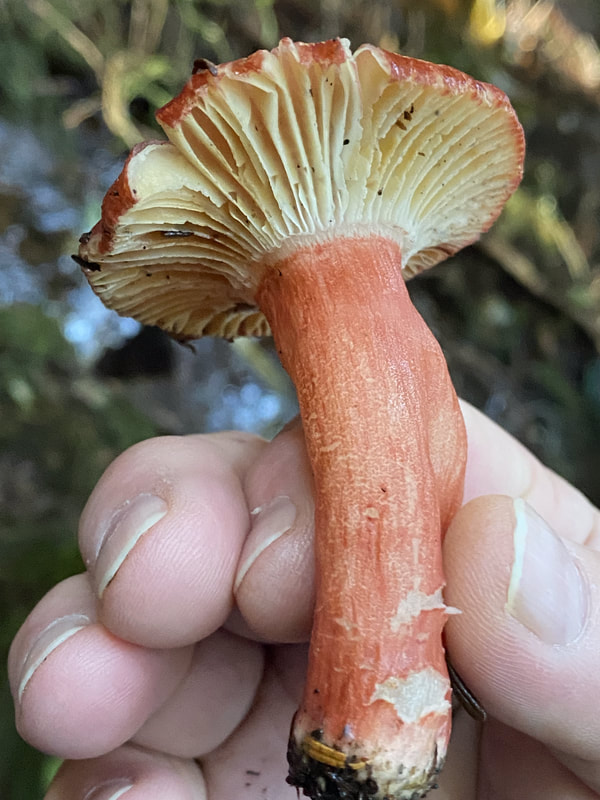
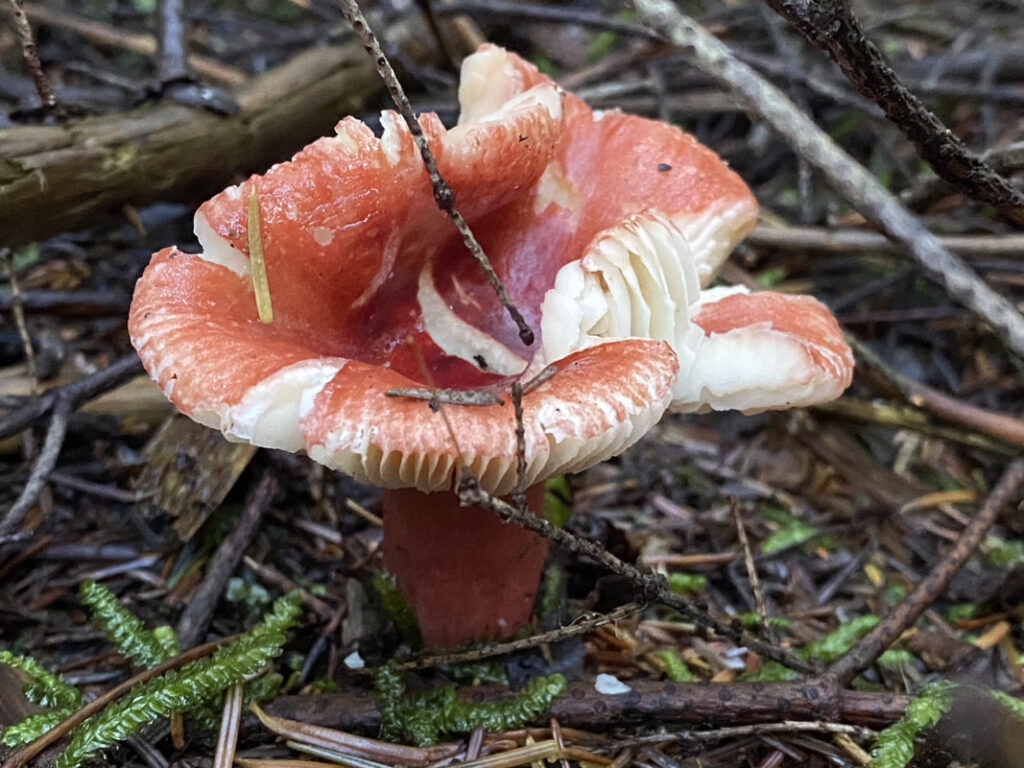
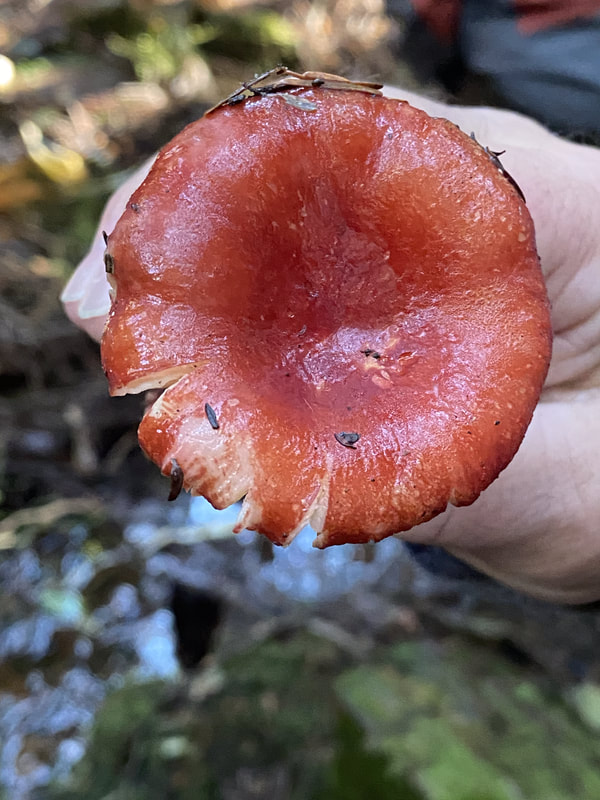
Hydnum umbilicatum – Belly-button Hedgehog
No poisonous confusing lookalike
Spines on underside of cap – important ID feature
Mycorrhizal fungi grows with conifers
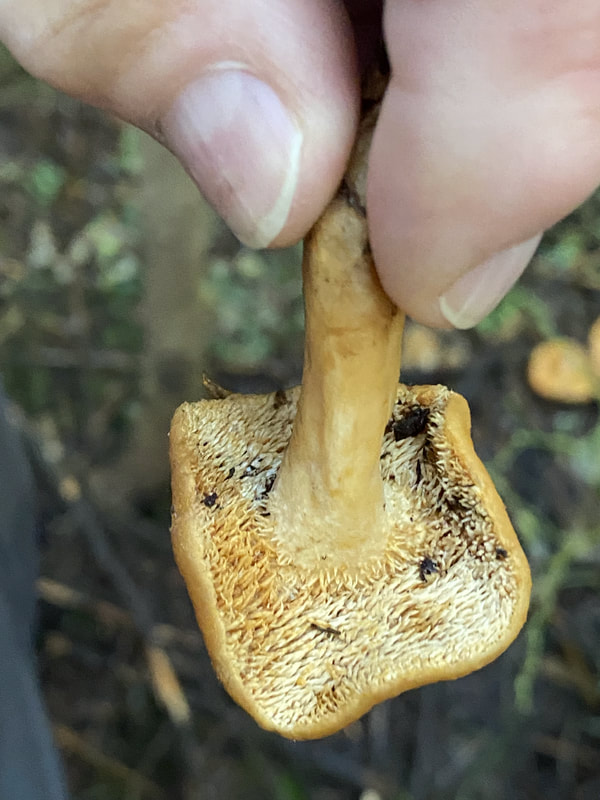
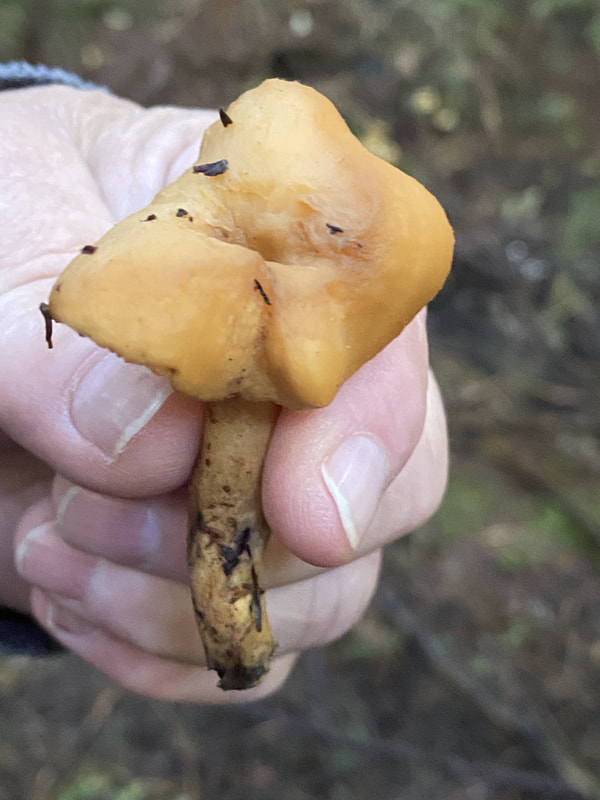
Apparently I didn’t take any photos of this mushroom?!?
| Pleurocybella porrigens – Angel wings Found on very dead trees (not newly dead) Lots like oyster but no stem Rubbery texture All white Regarded as edible BUT in Japan 17 ppl died after eating them (read more here https://cen.acs.org/articles/89/i13/Angels-Wing-Mystery.html) |
Pseudohydnum gelatinosum – Toothed Jelly Fungus
Teeth on underside of cap like hedgehog
Pseudo-(gelatinous false hedgehog
Cats tongue
Spirit gummy bear
One of few mushrooms can be eaten raw
Can actually make gummy bears out of them
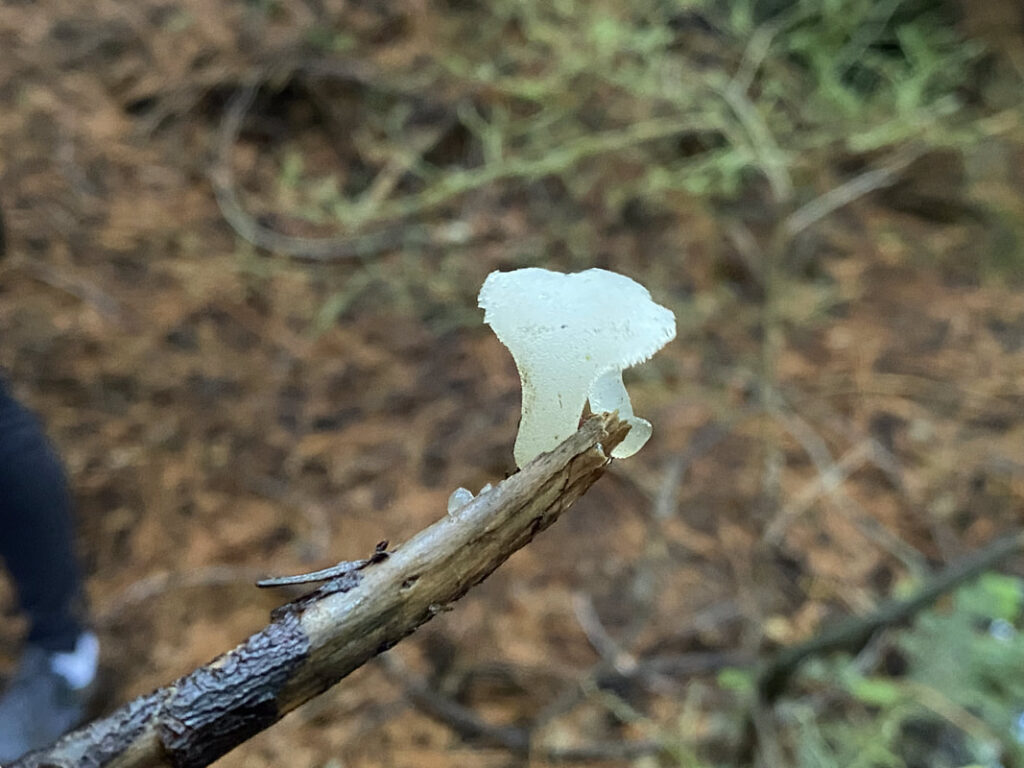
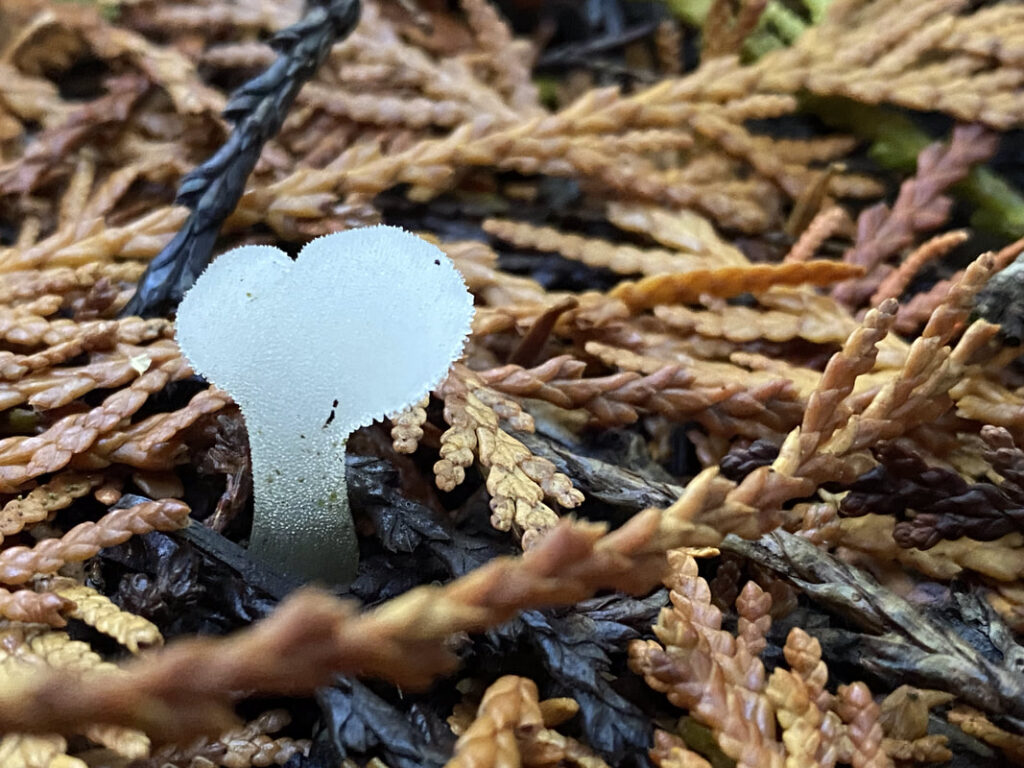
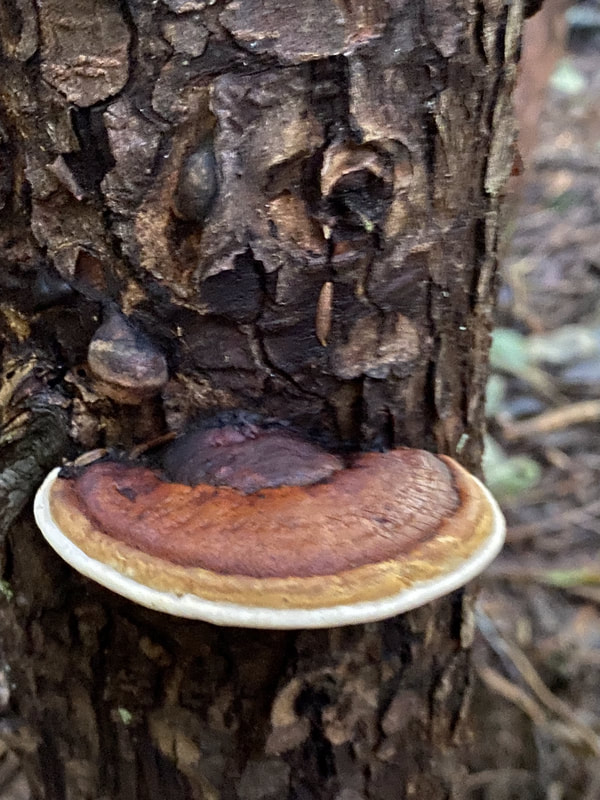
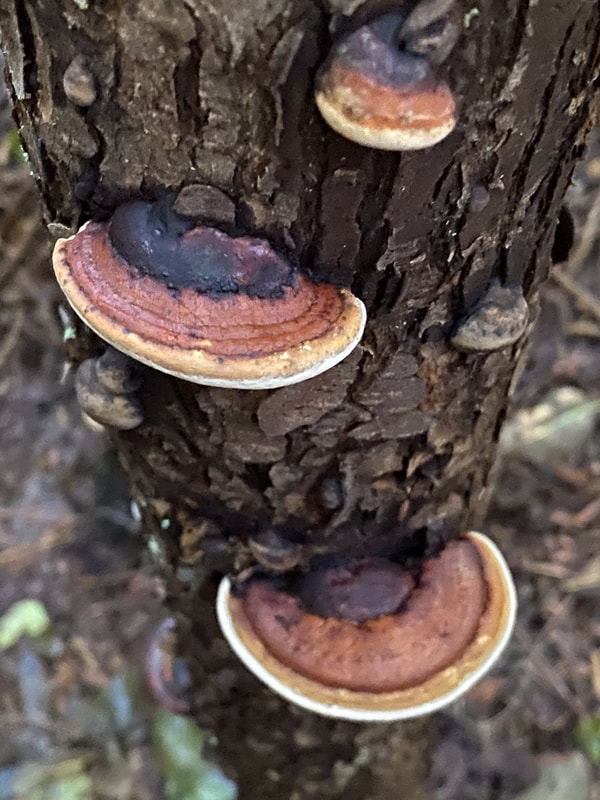
Fomitopsis pinicola – Red-belted Conk or Red-banded Polypore
Wear a reddish belt close relatives
Hard and seen on tree
Way too hard to be edible
Medicinal mushroom
Anti inflammatory properties
Immune modulating properties
Many medicinal mushroom available to quiet the inflammation system without sending into over drive
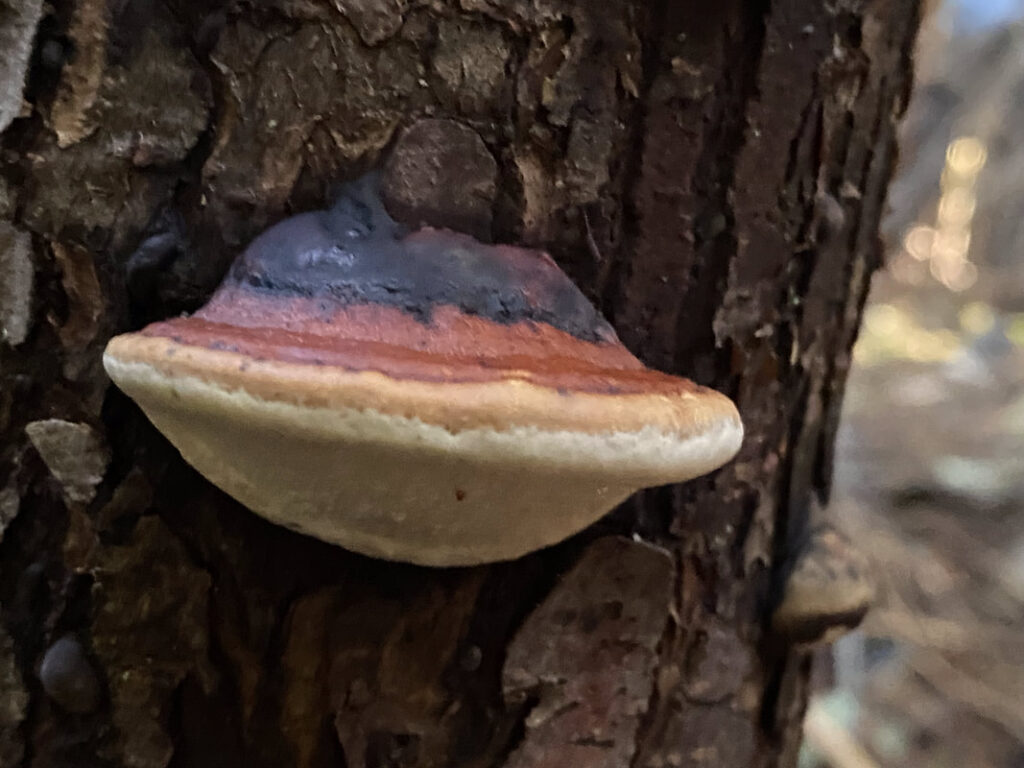
Mushroom Tincture
Double extract tincture in strongest alcohol
Lamb’s Navy Rum 151
Cut or break up mushrooms
Soak them covered for 2 weeks
Squeeze
Boil same mushrooms and reduce for a few hours and strain and squeeze and have minimum 30% alcohol (shelf Stable) so both alcohol and water soluble compounds intact
another page in my mycology learning journey
No bad mushrooms. Just different ones that have different relations to us as humans and others in the ecosystem.
- Build relationship with land and ecosystem
- Land stewardship and enact change on land
- Landscape in transformation. The earth is infinitely evolving
- There is power in shifting our processes of language so they highlight all living beings and the animacy. Our world is dynamic and active
- Trees are still present that we can’t see that are feeding and cycling it’s nutrients
- Where we stand is about ~150 year old forrest. The land was clearcut. This forest is young!
- Mushrooms are evolving in their own way through the transformation of land and relationships by humans
Book recommendation from Willoughby
The Mushroom at the End of the World: On the Possibility of Life in Capitalist Ruins
Anna Lowenhaupt Tsing
What a rare mushroom can teach us about sustaining life on a fragile planet
